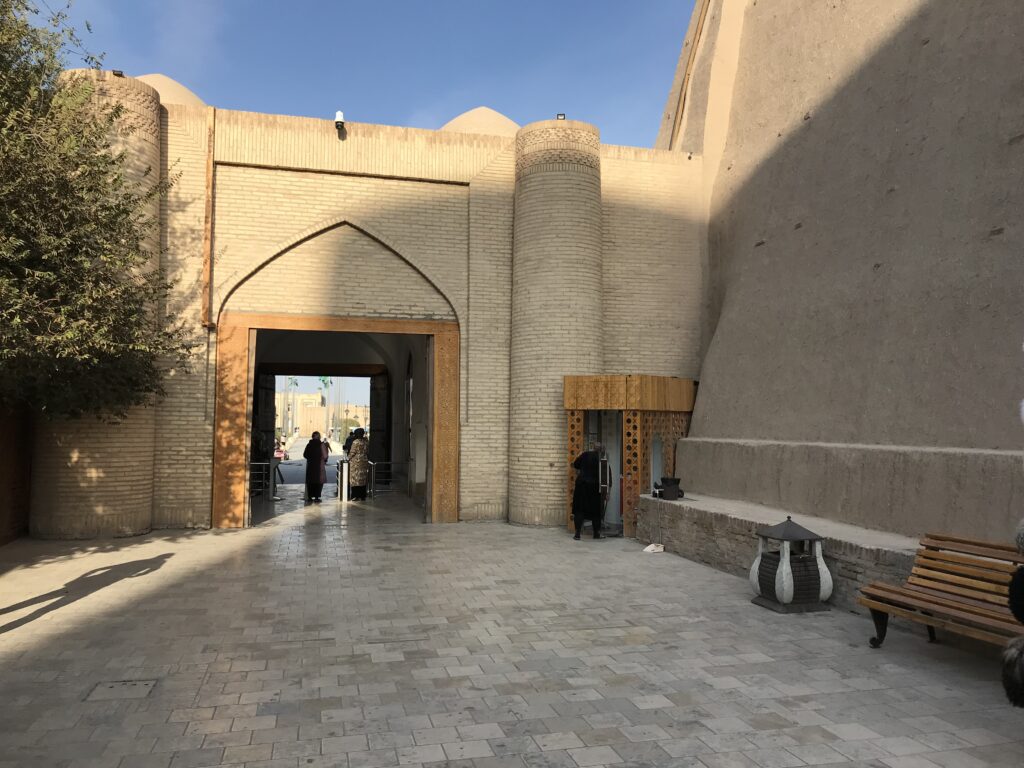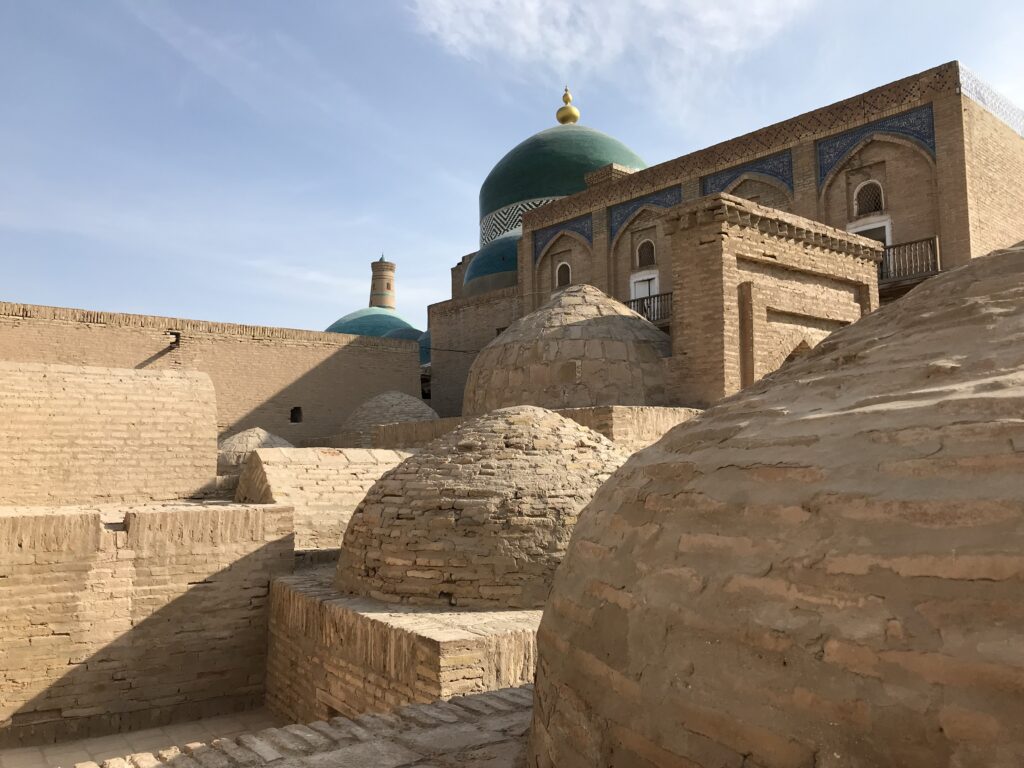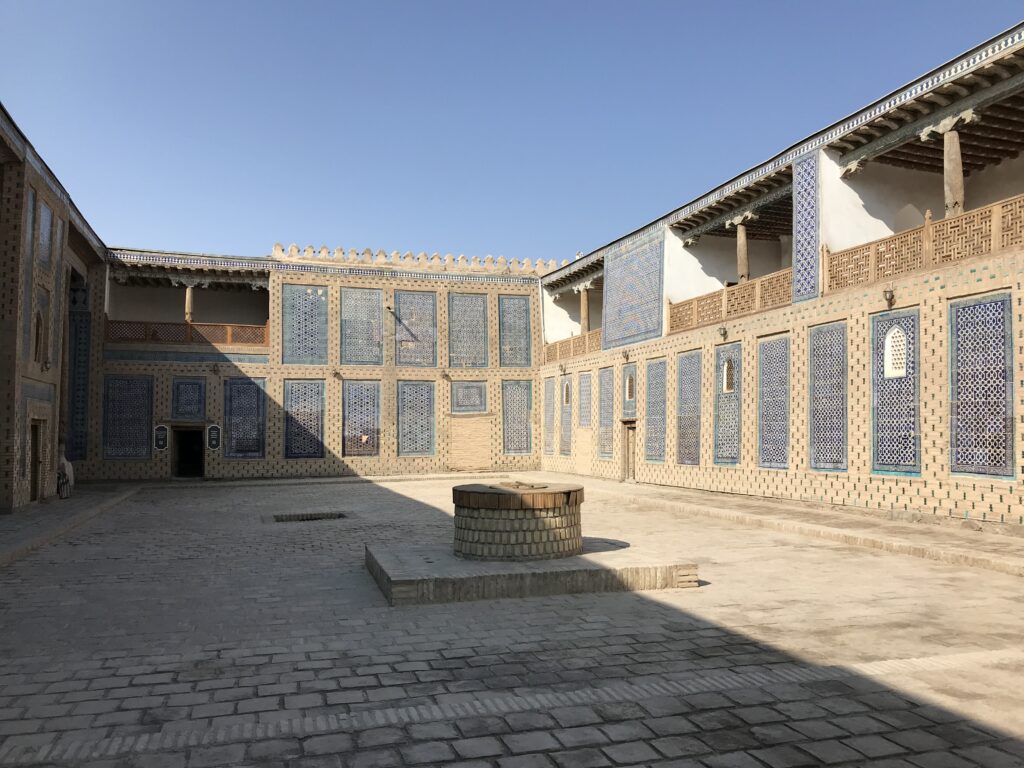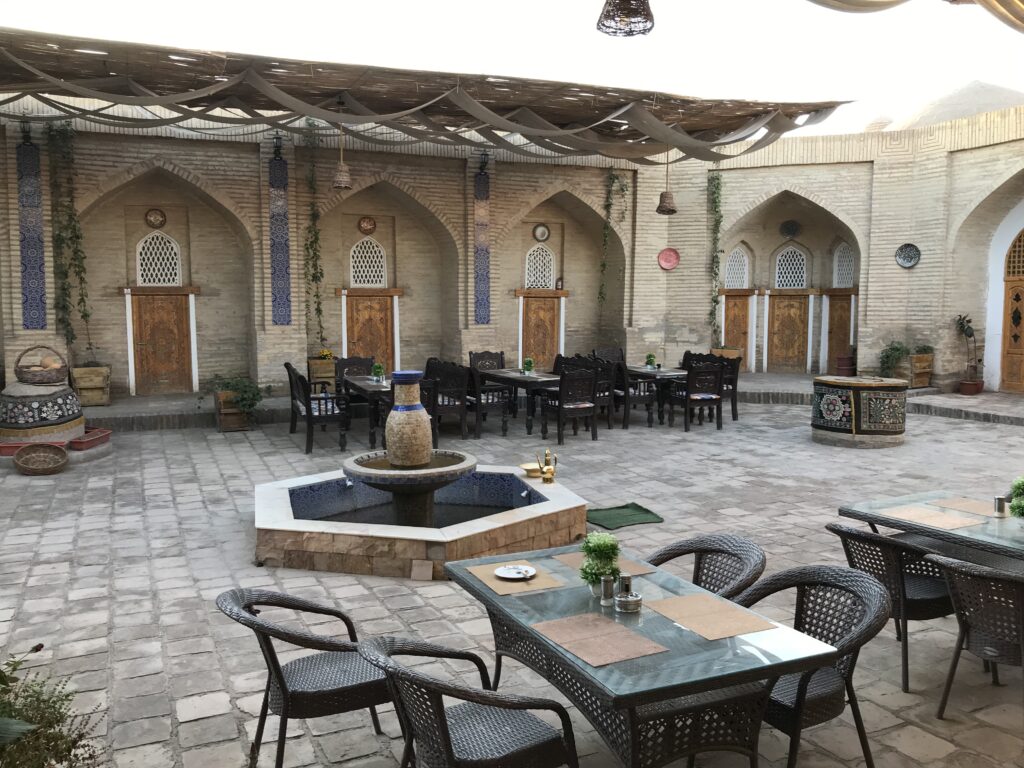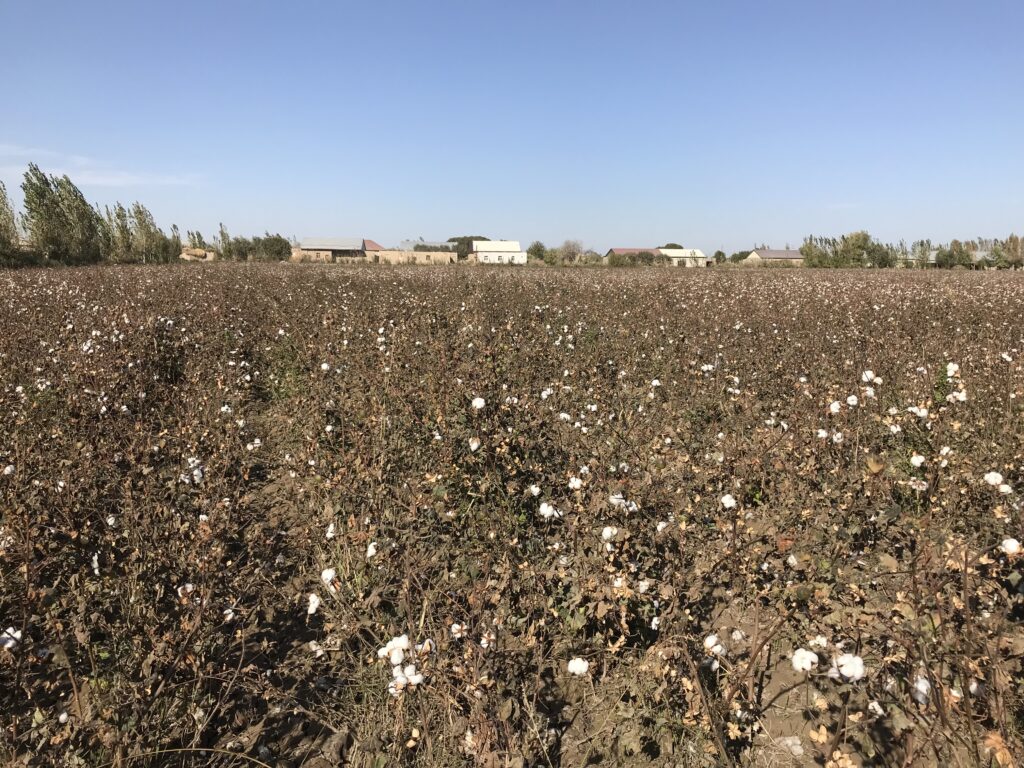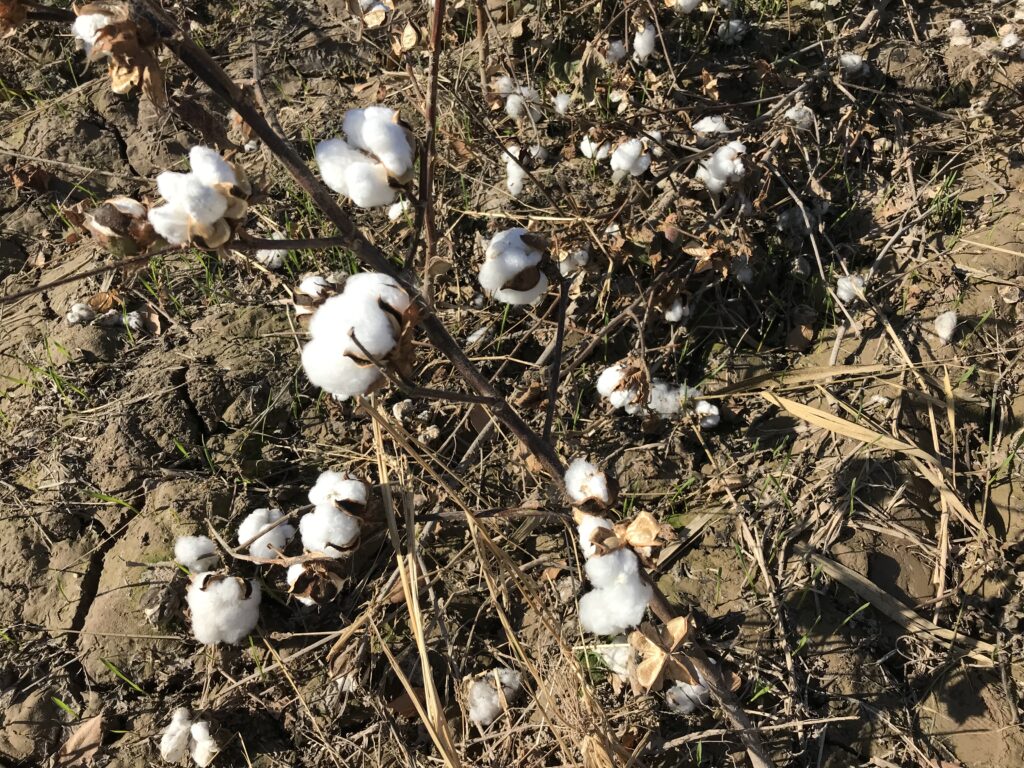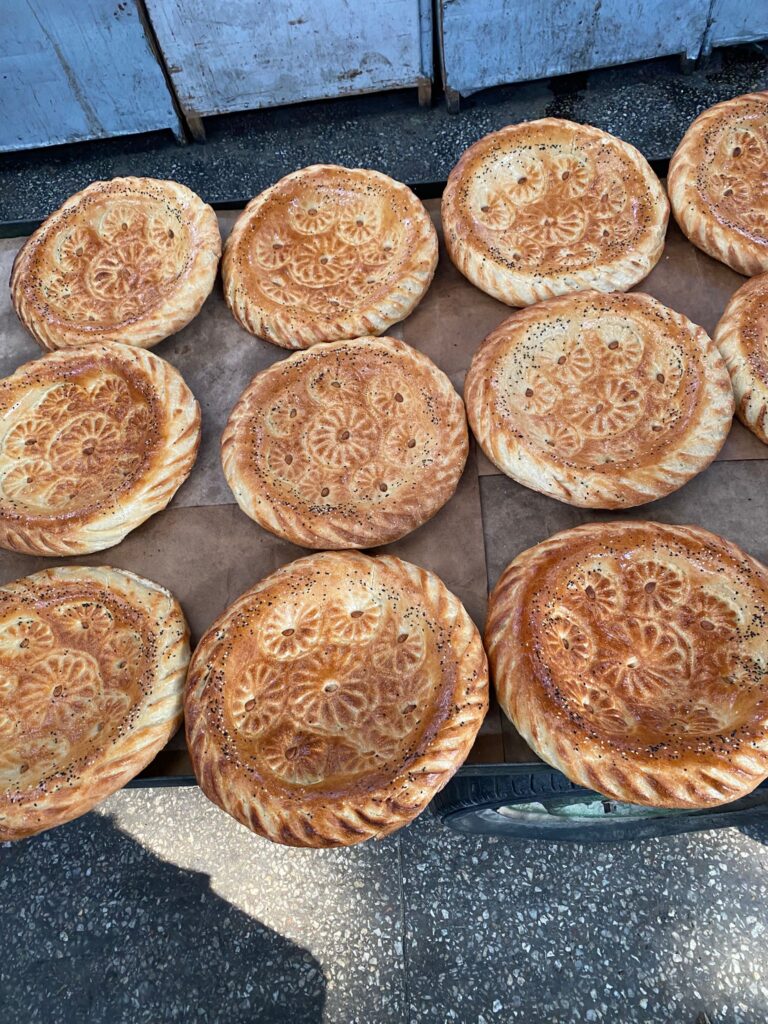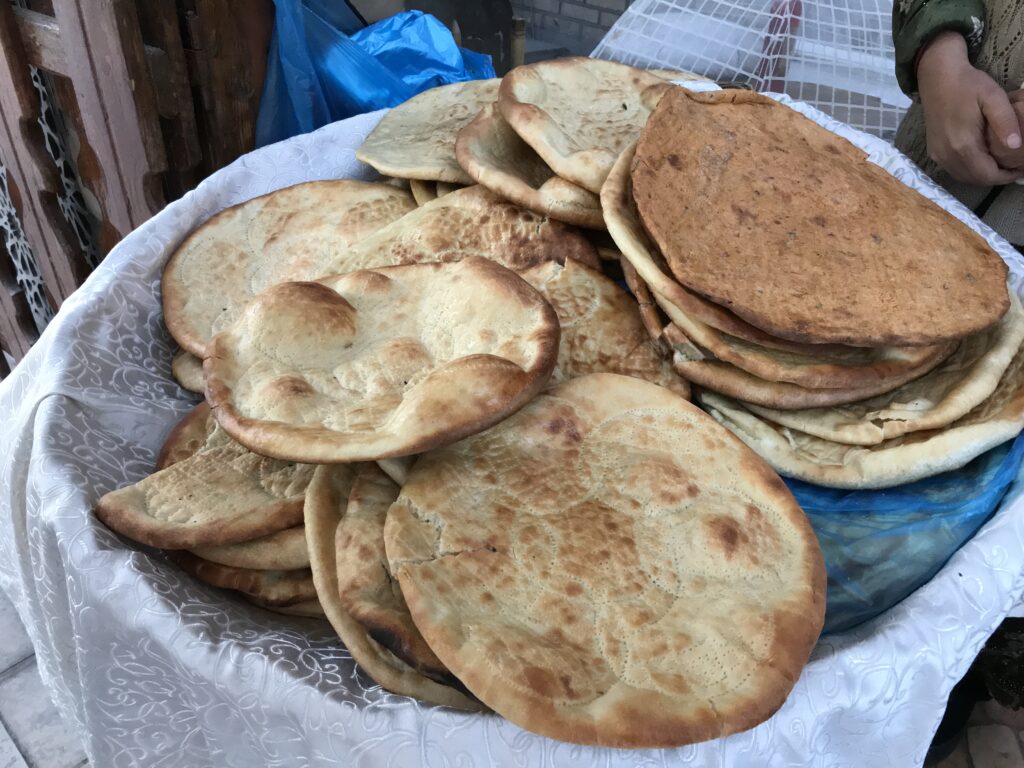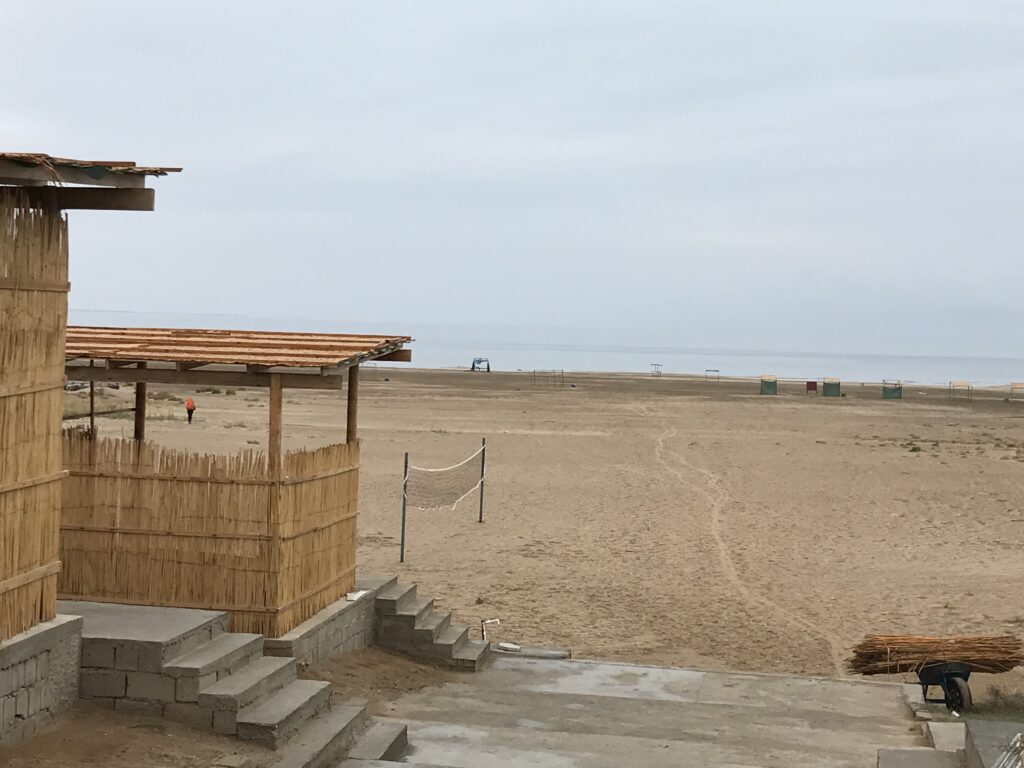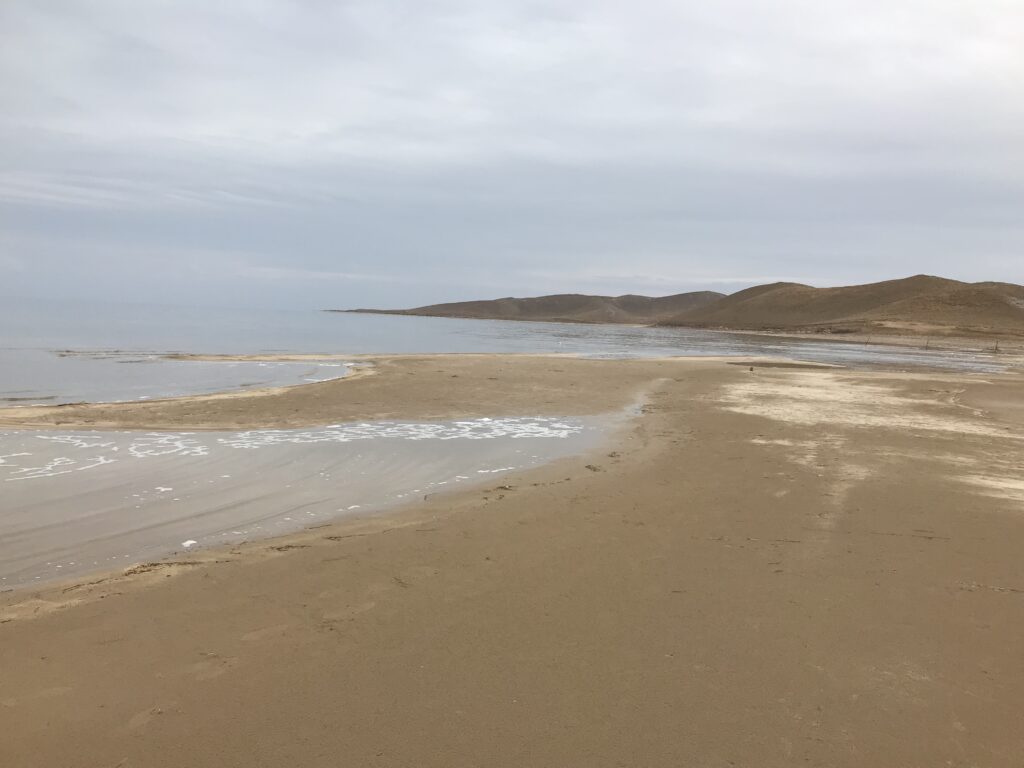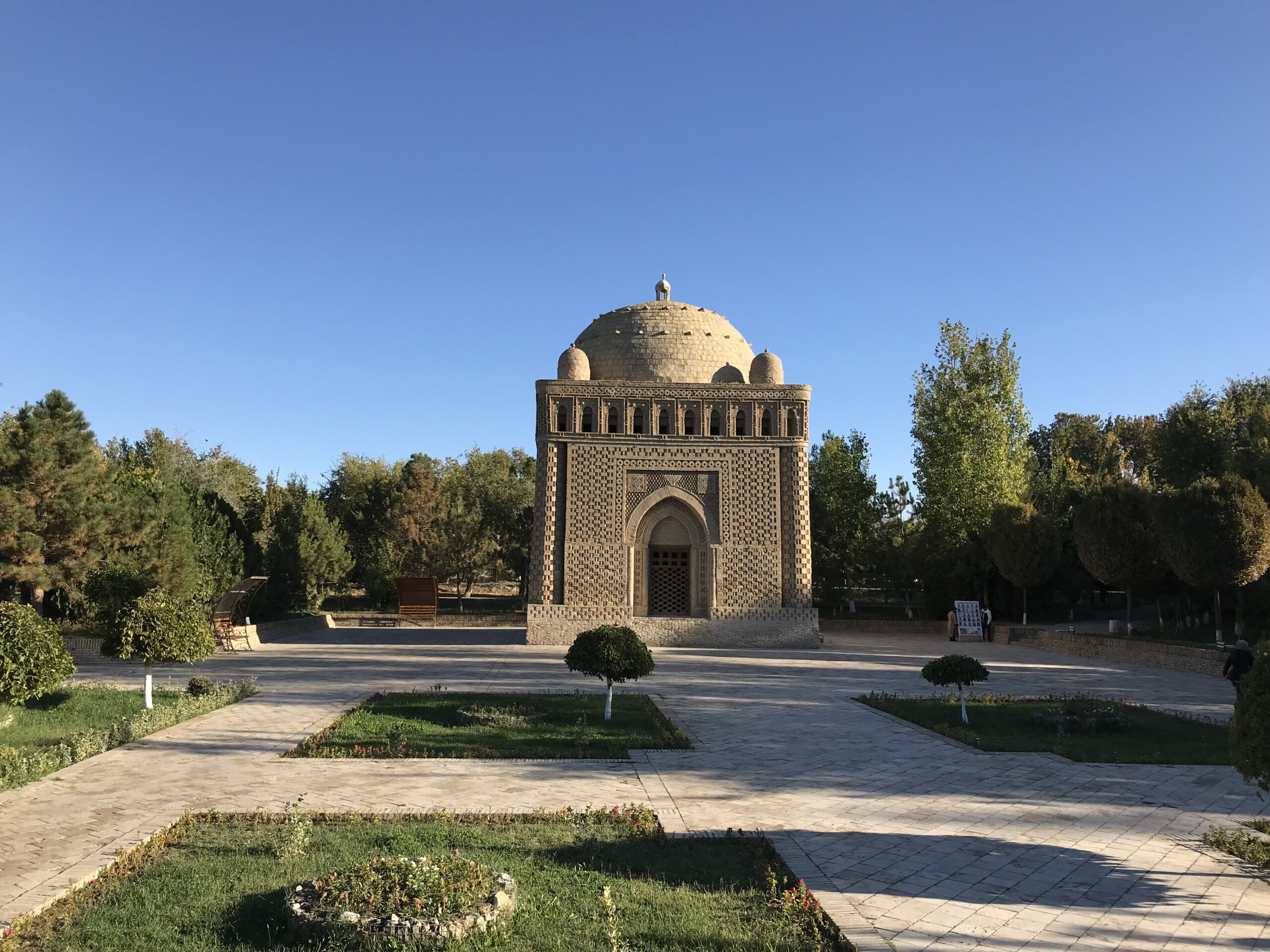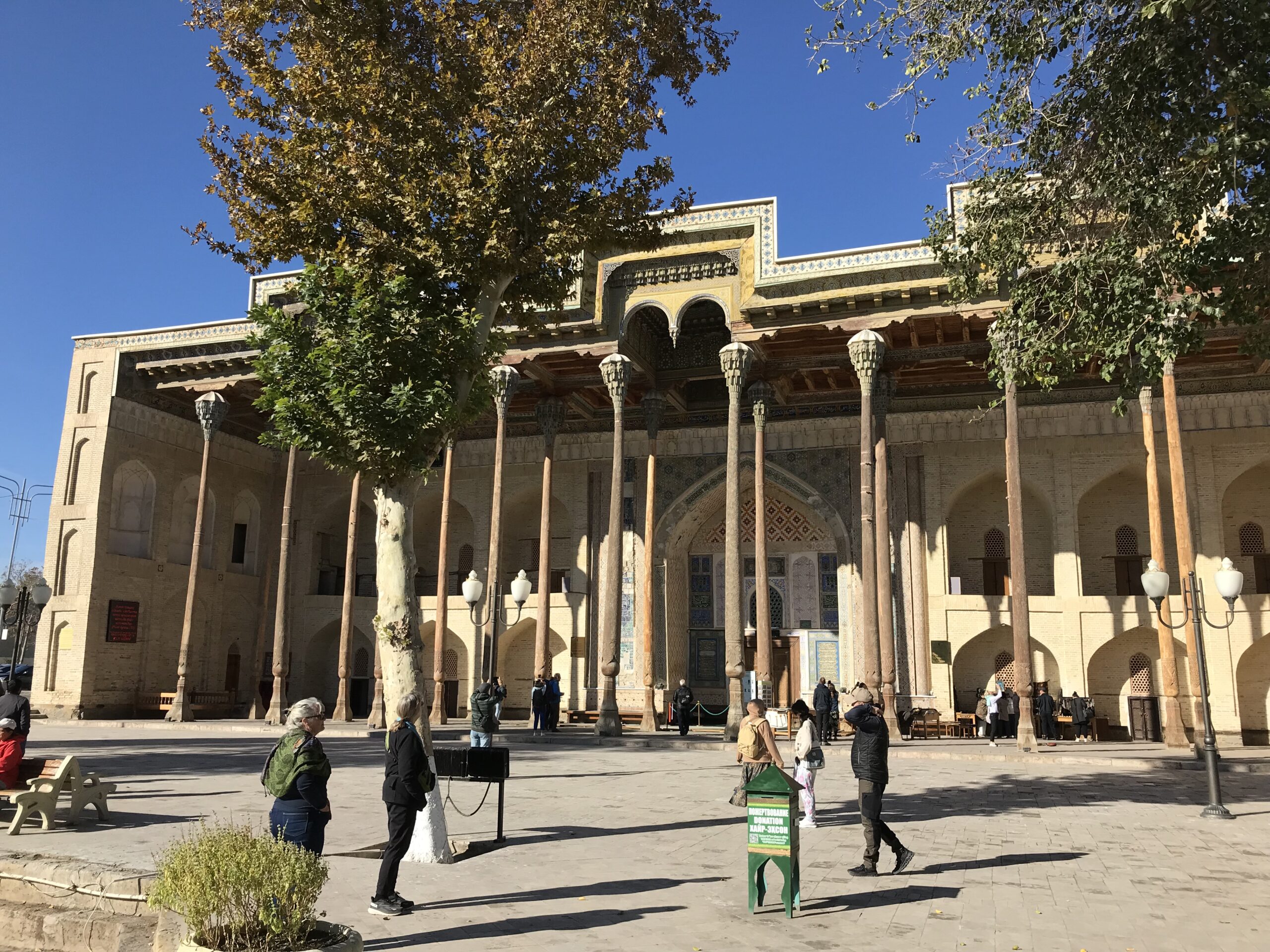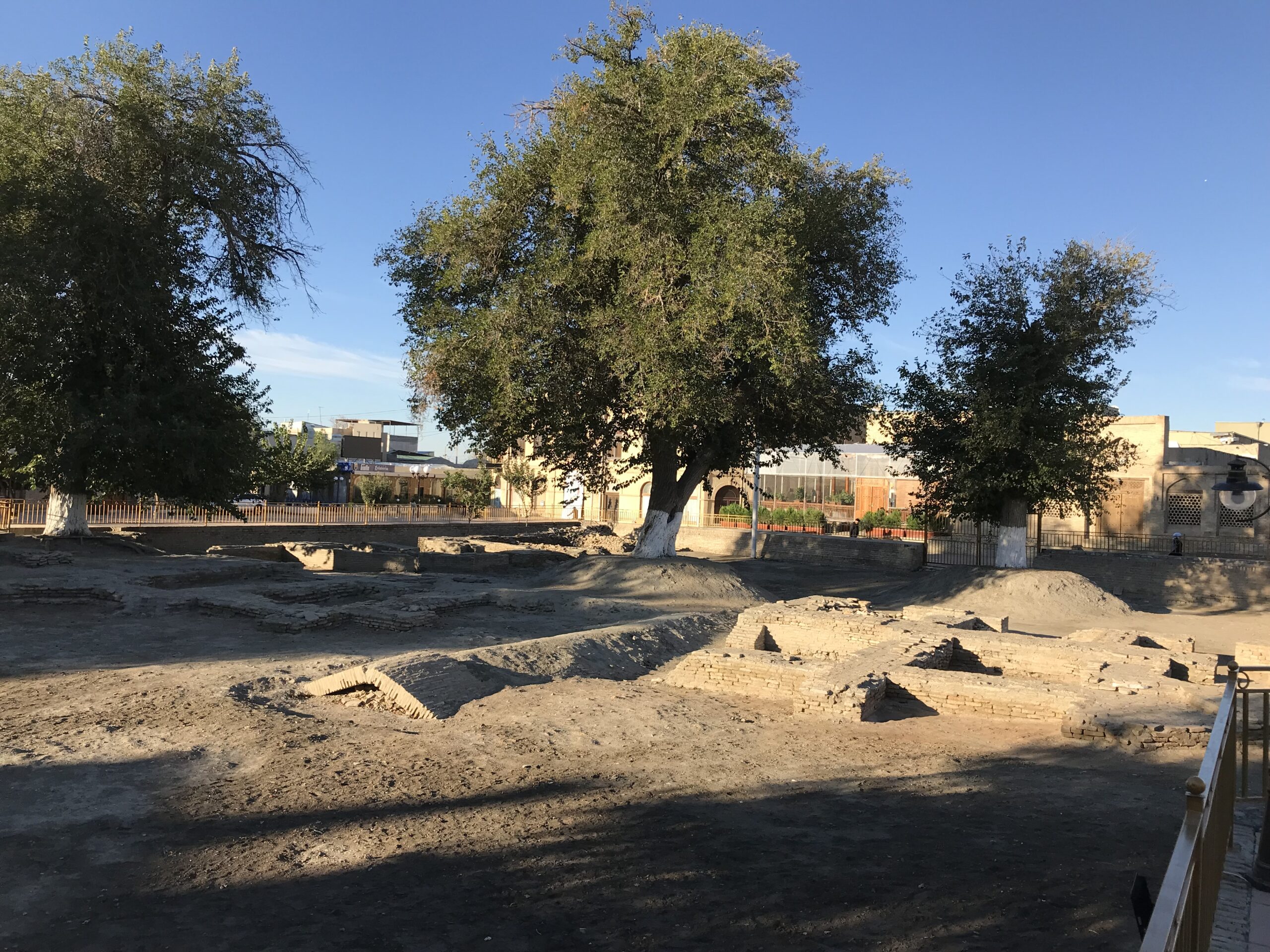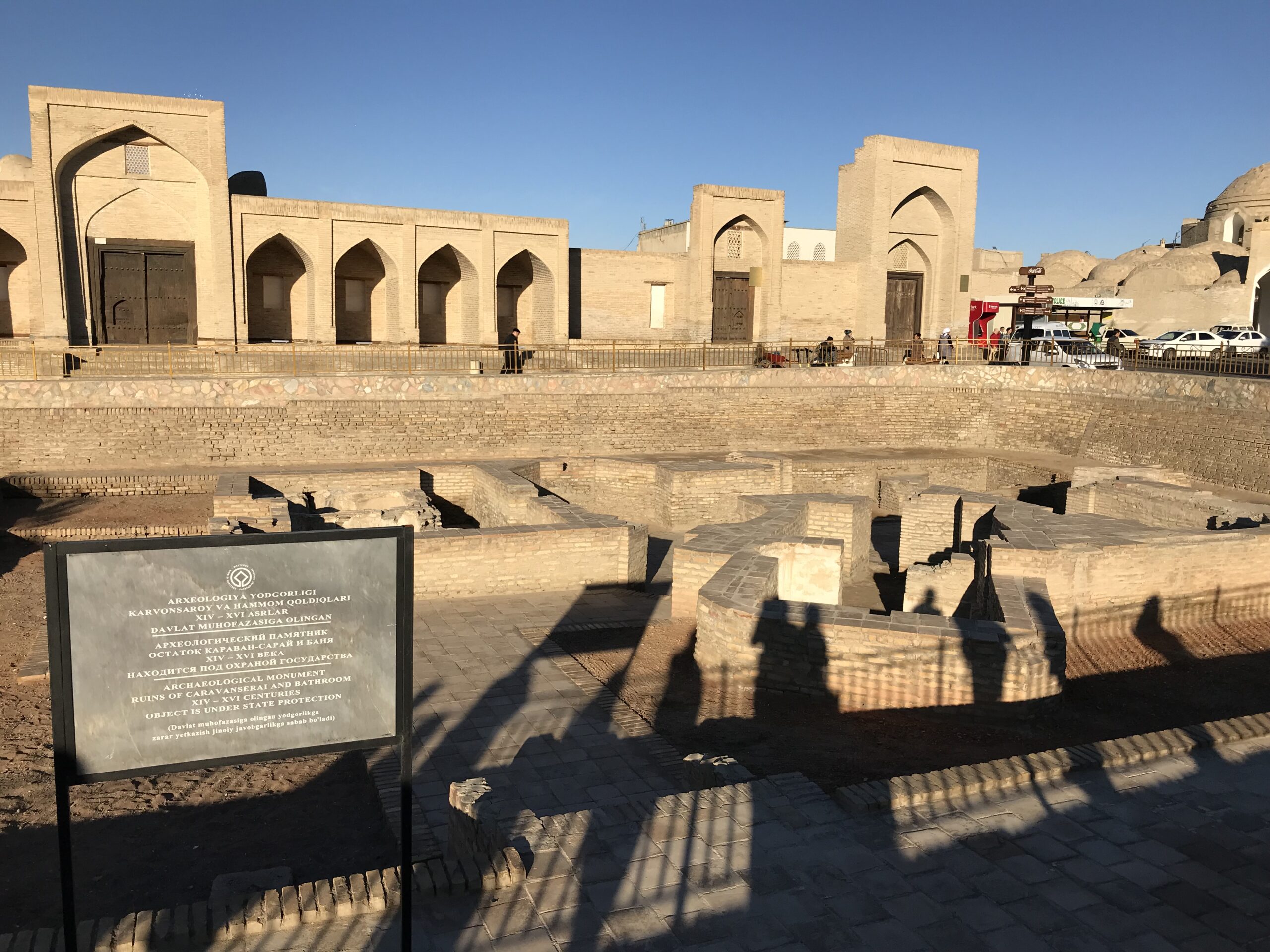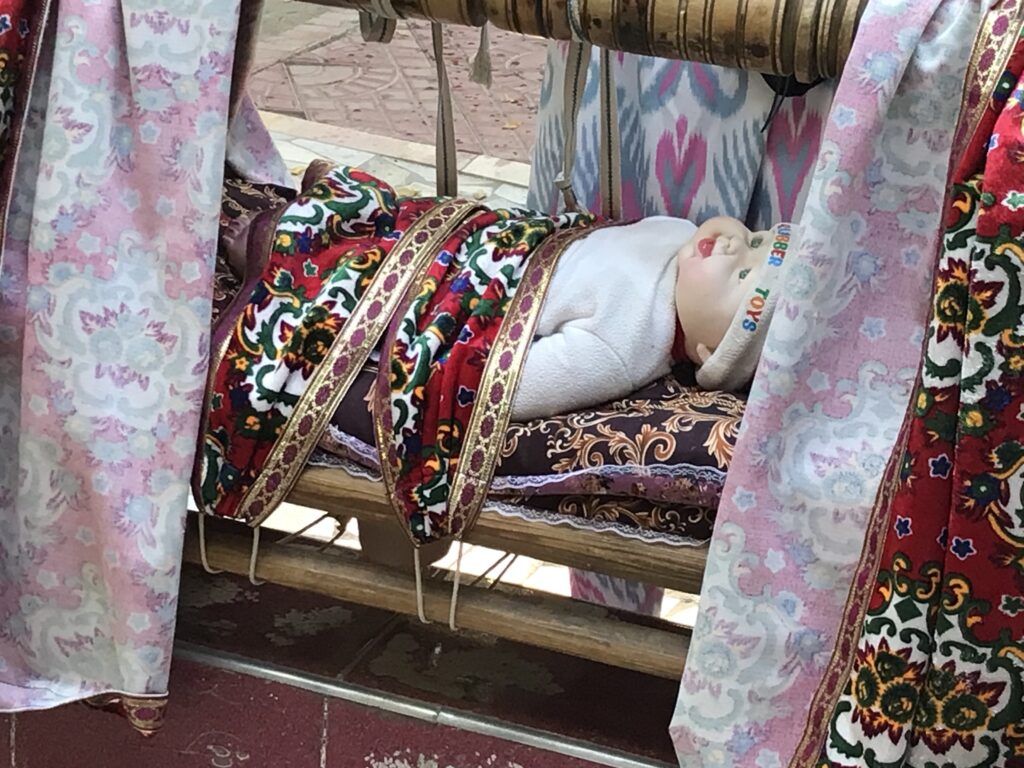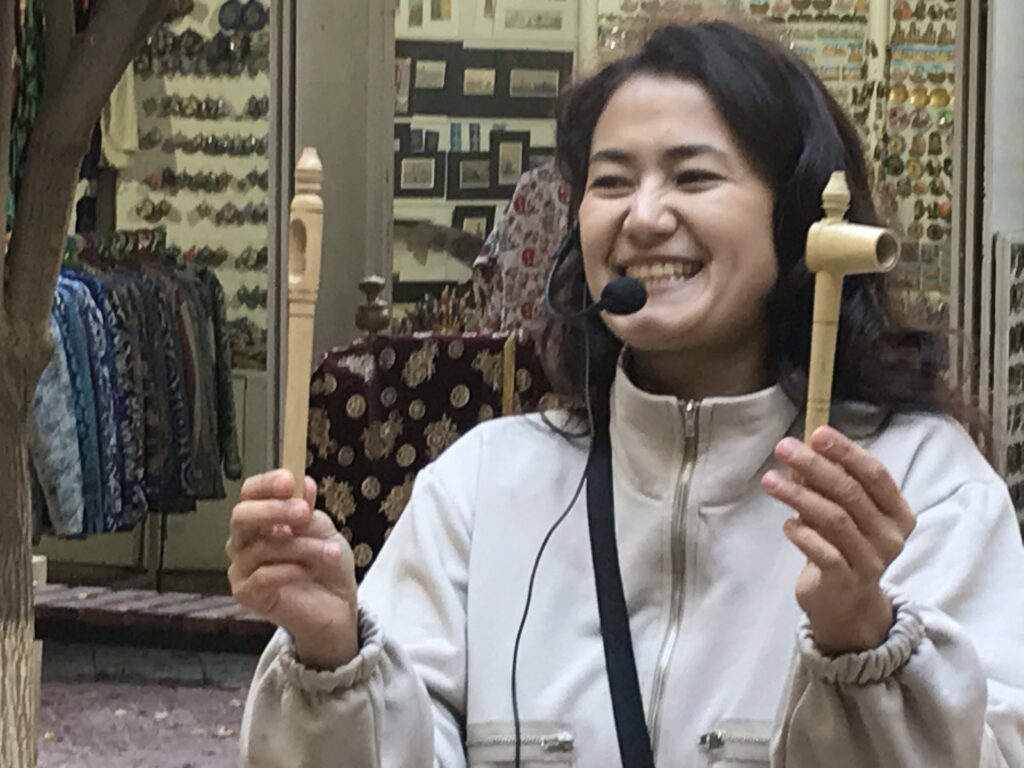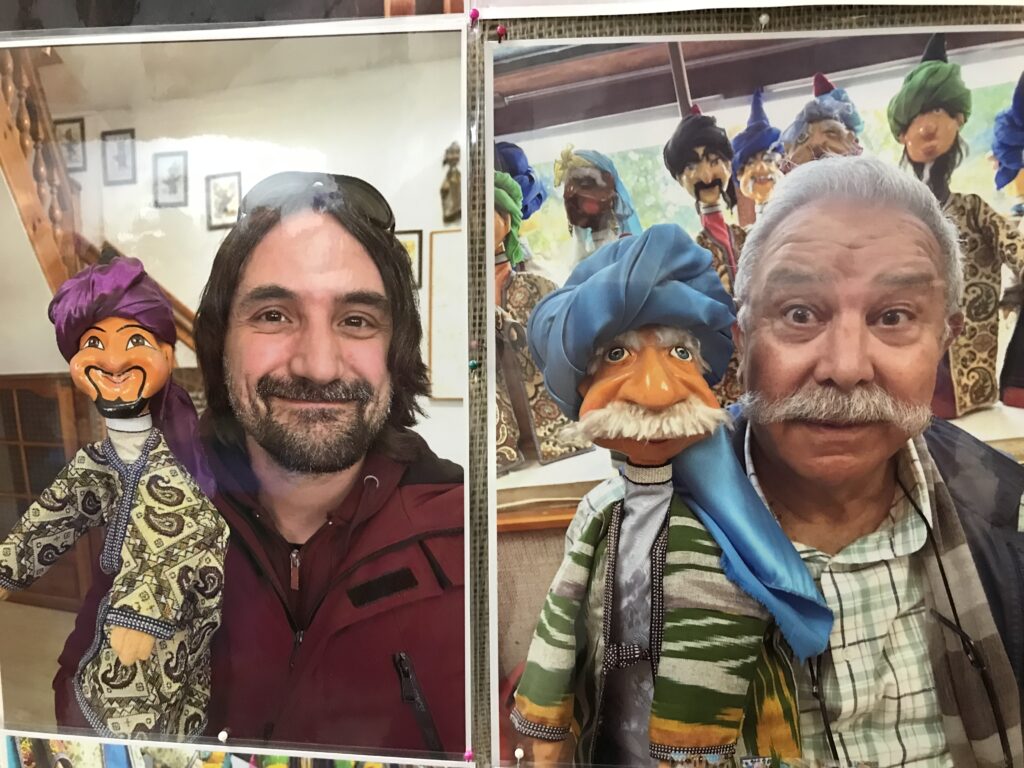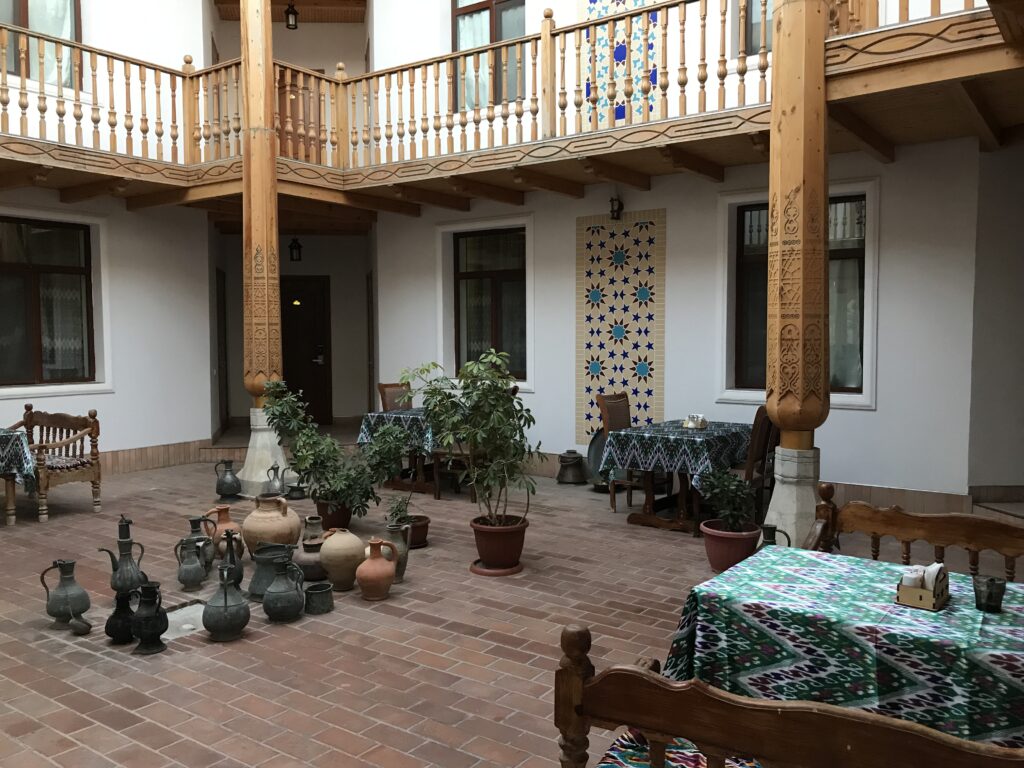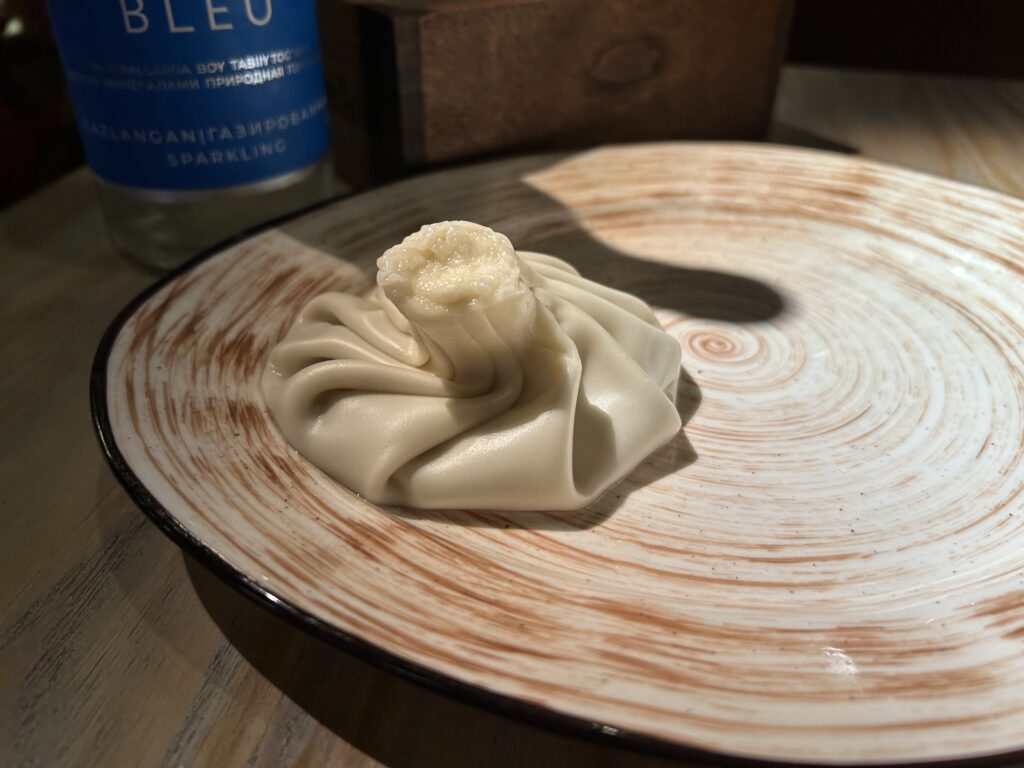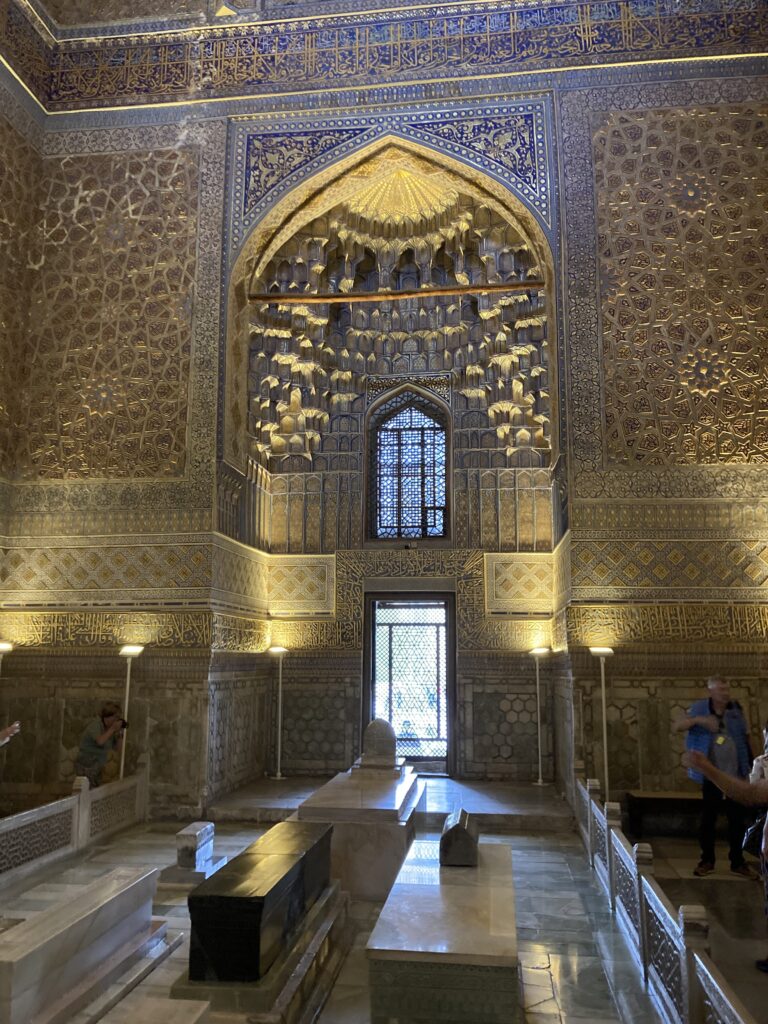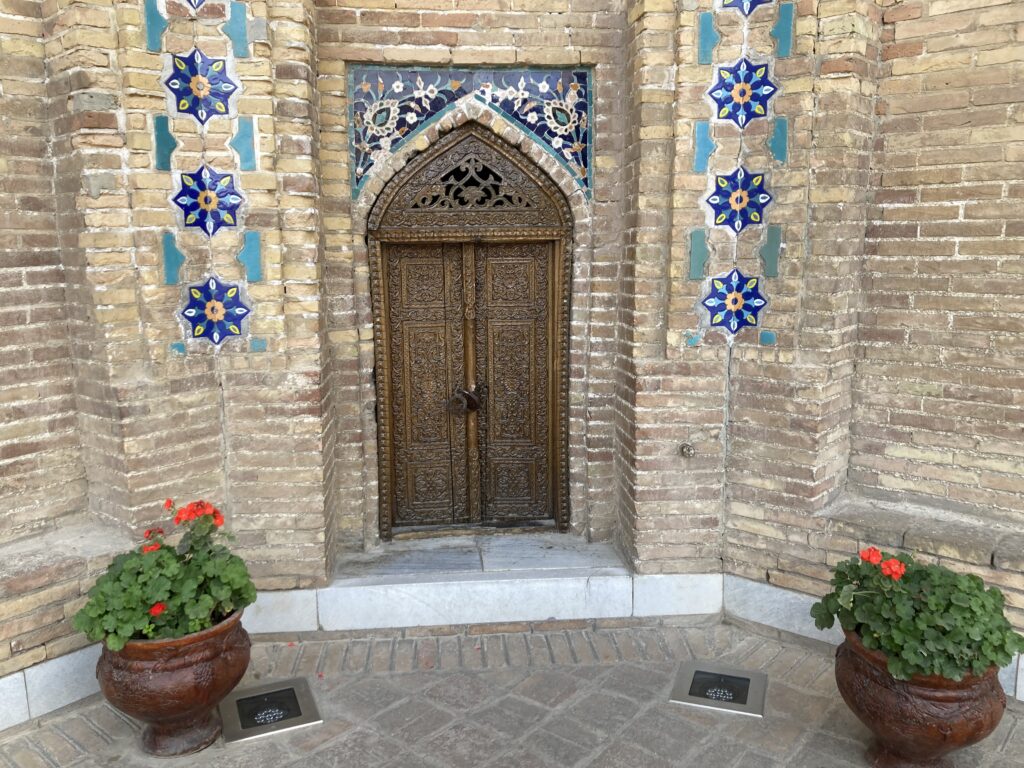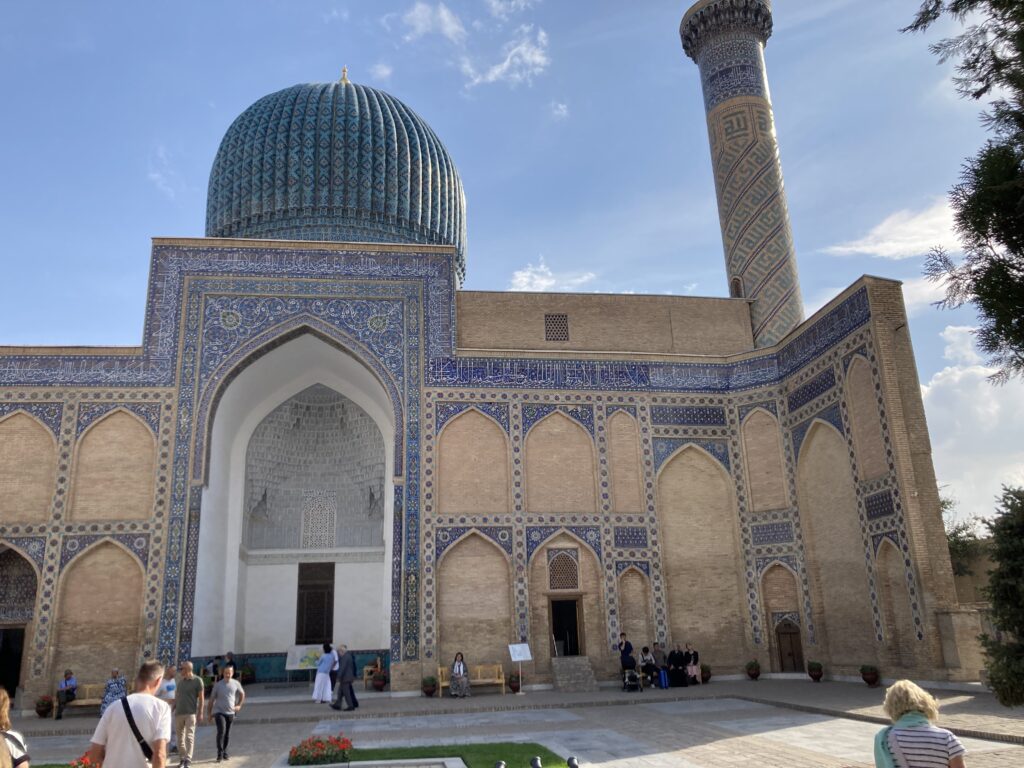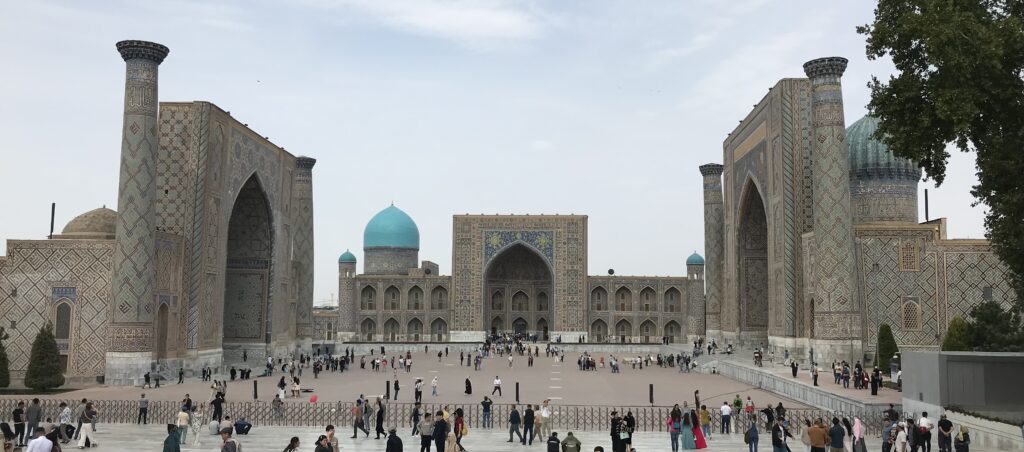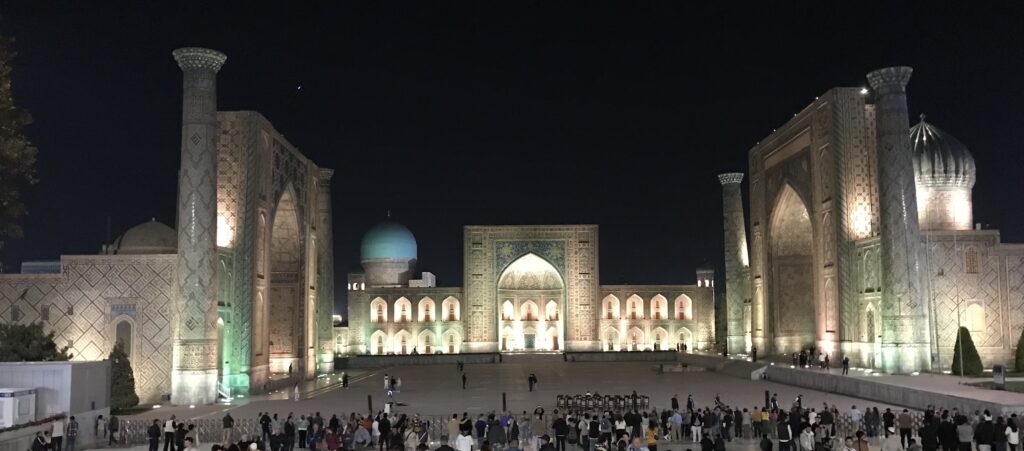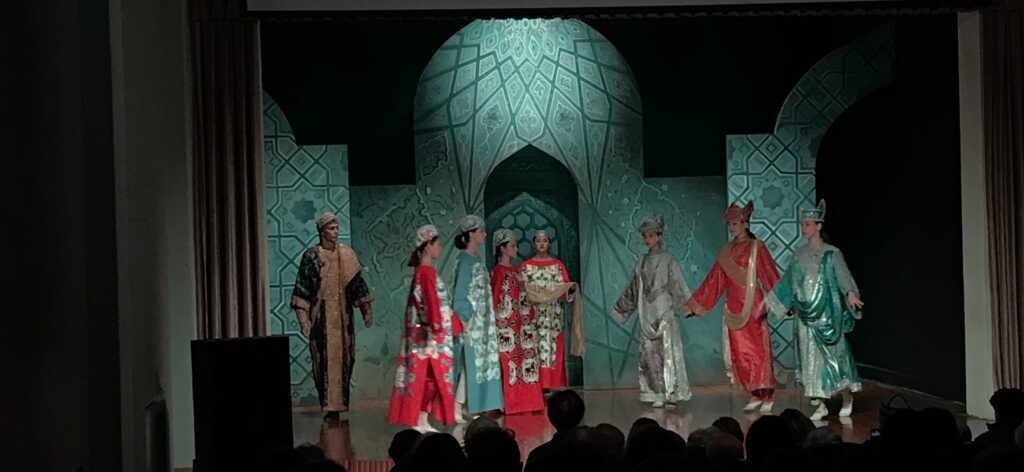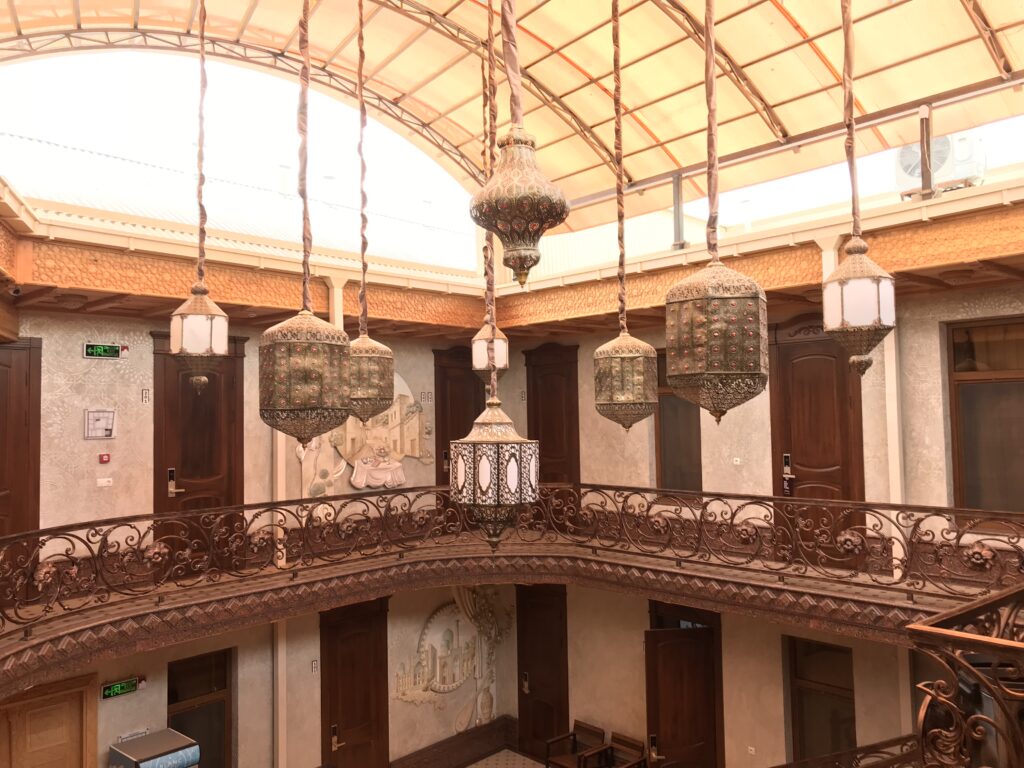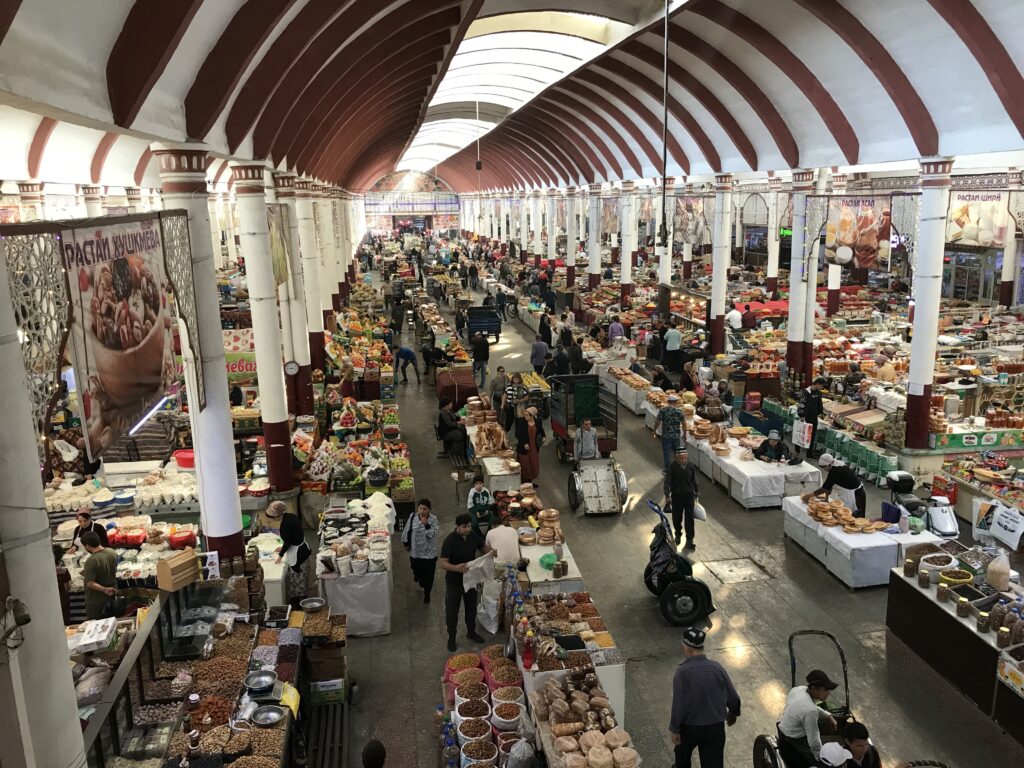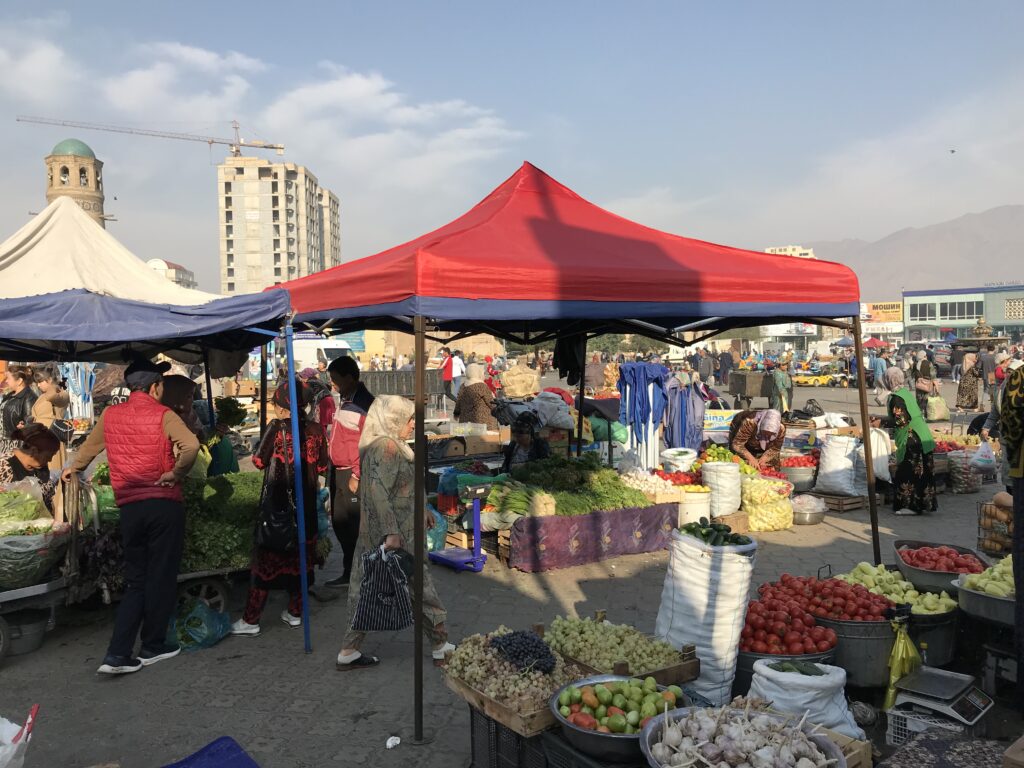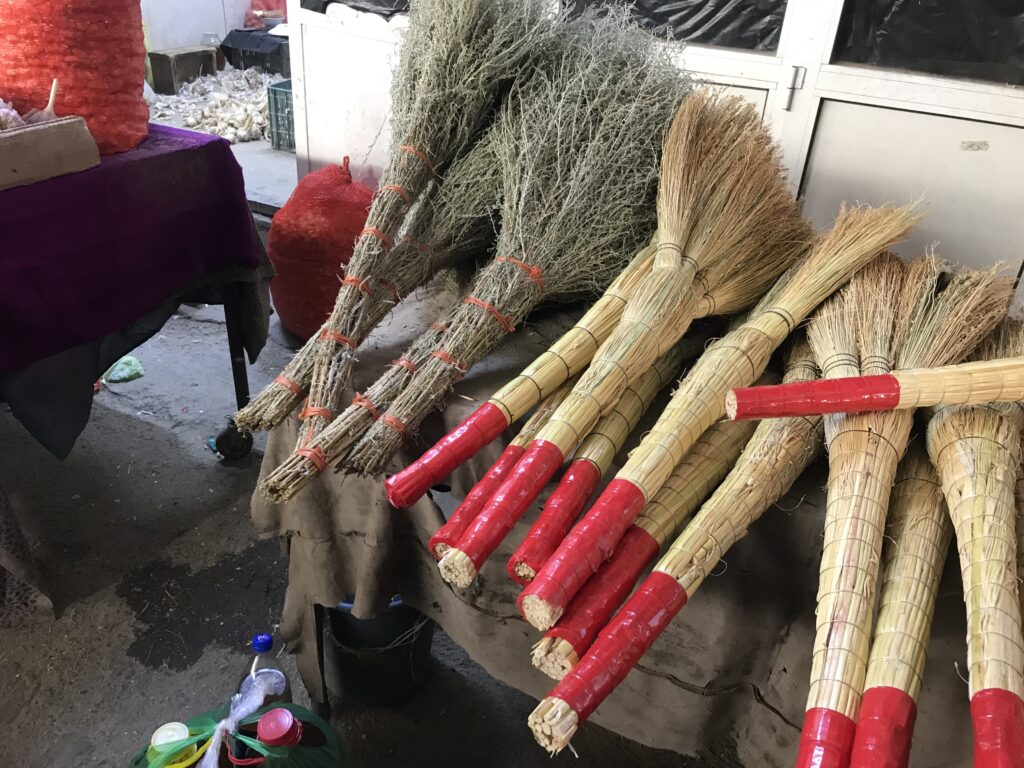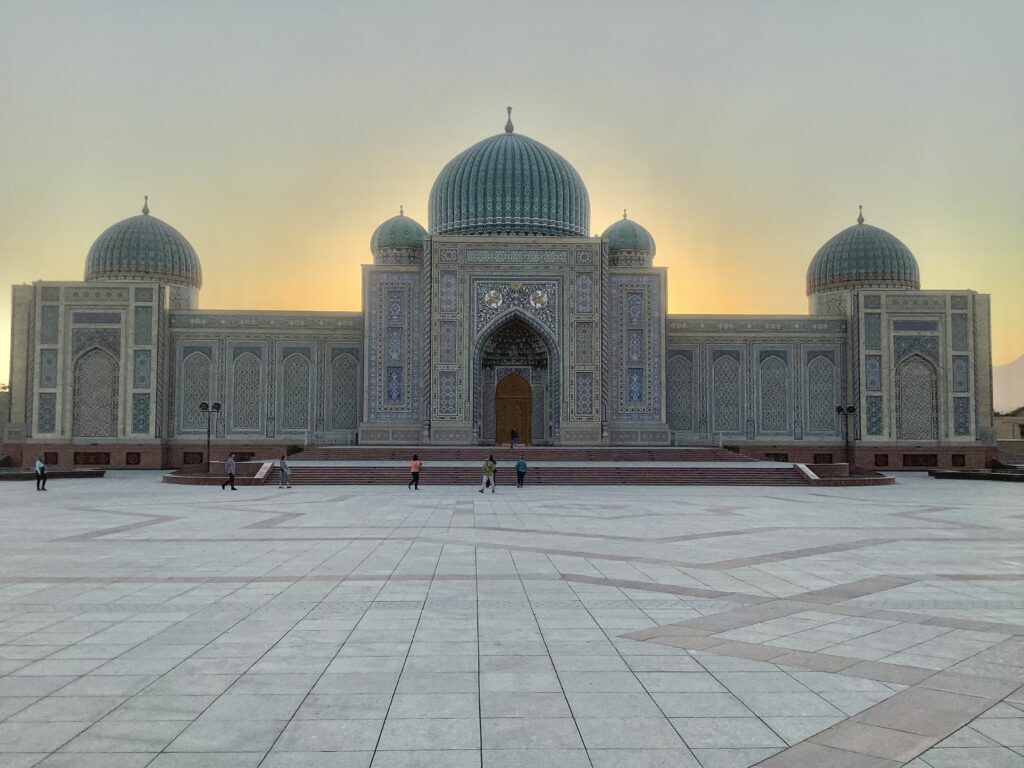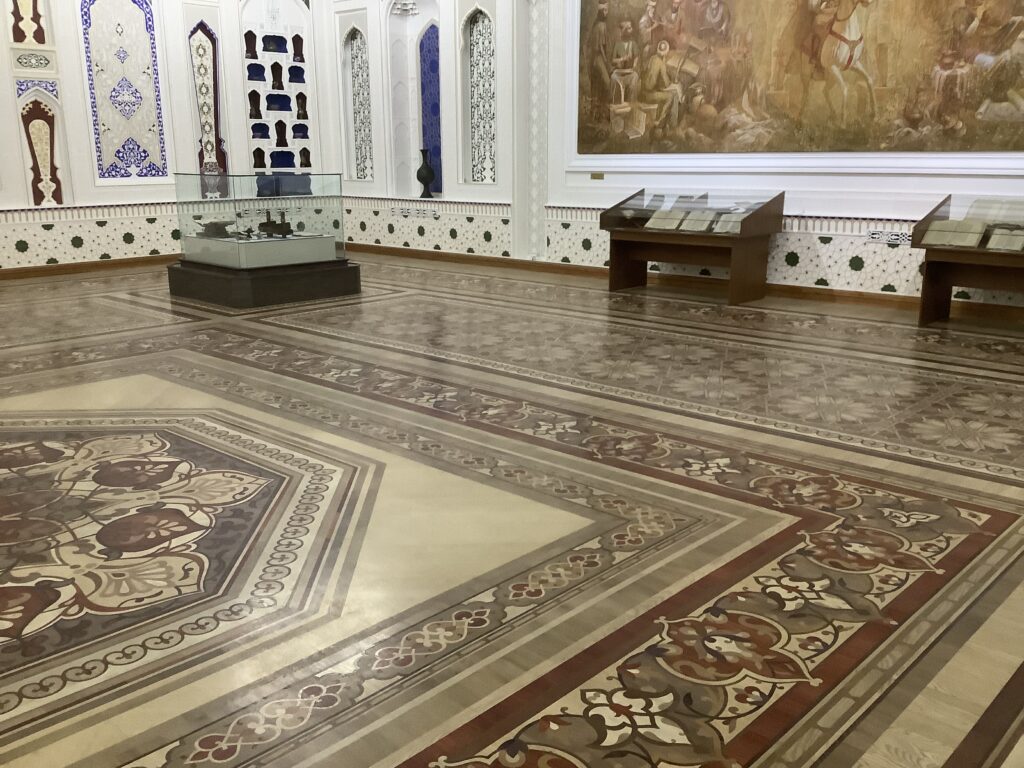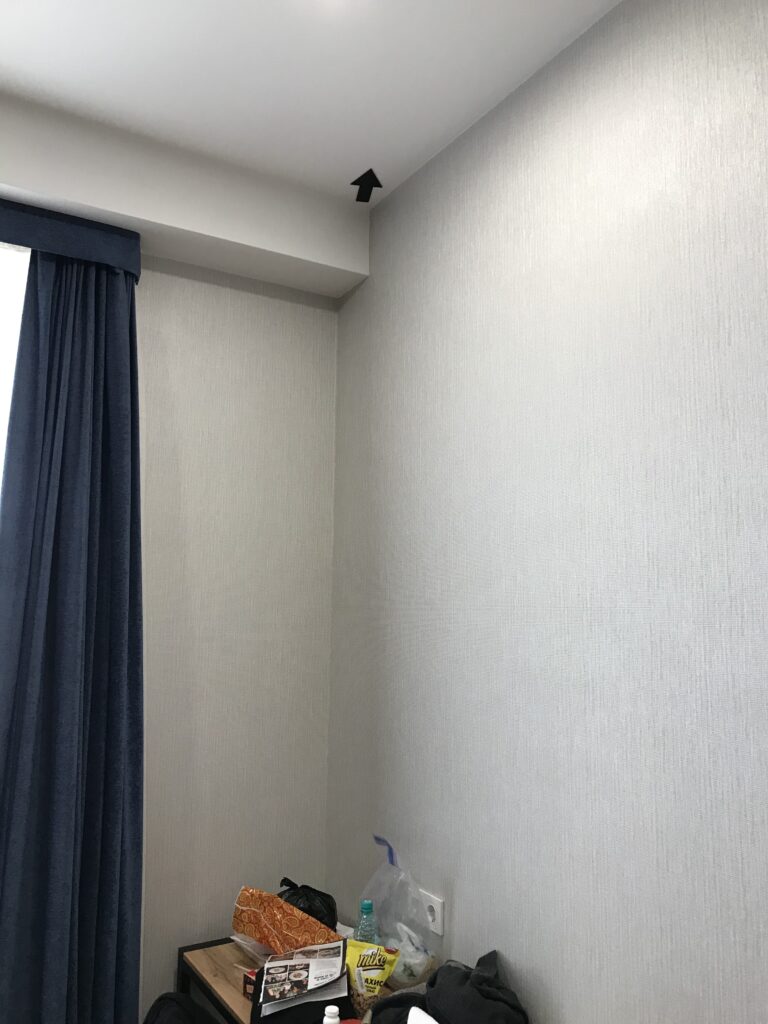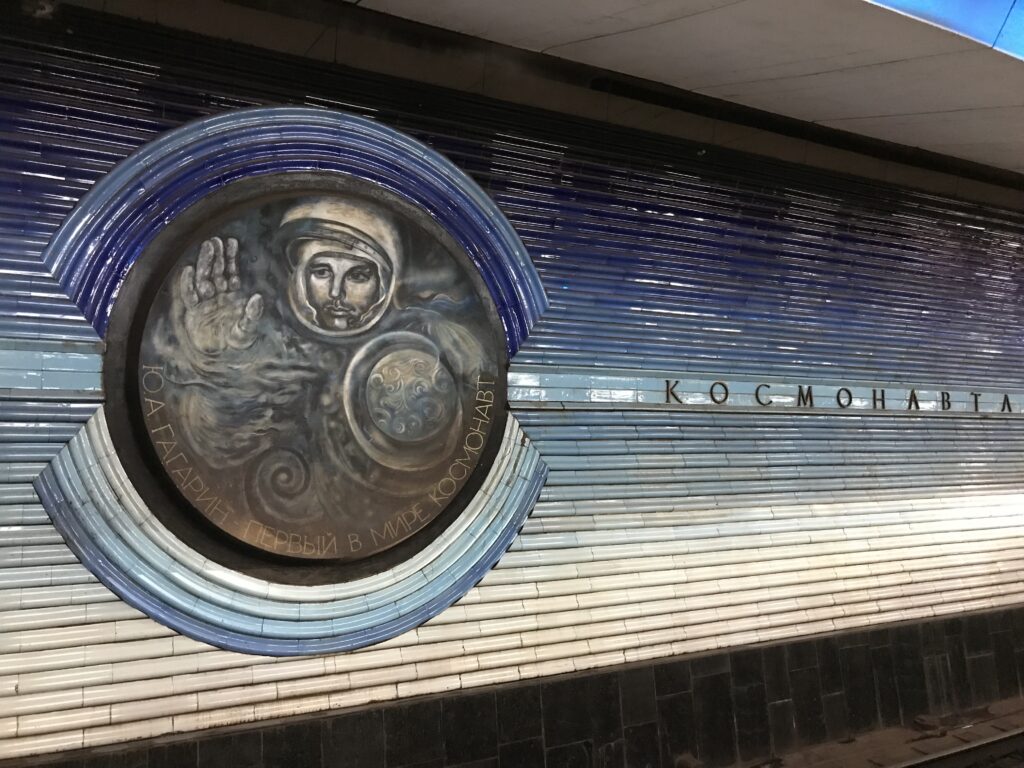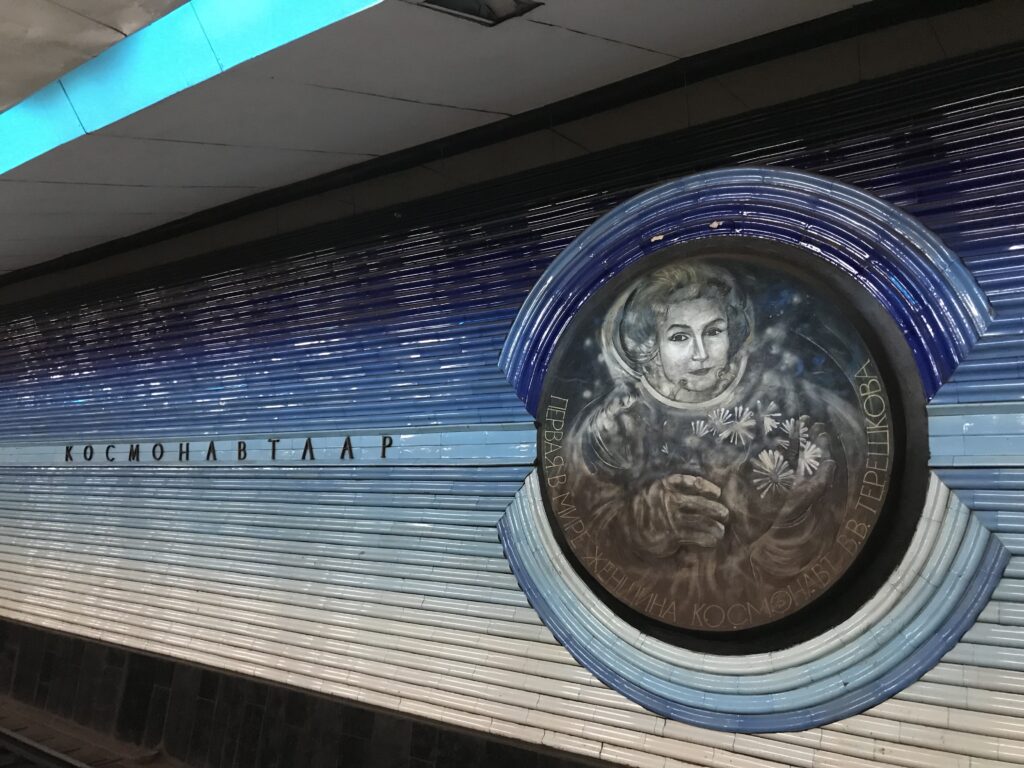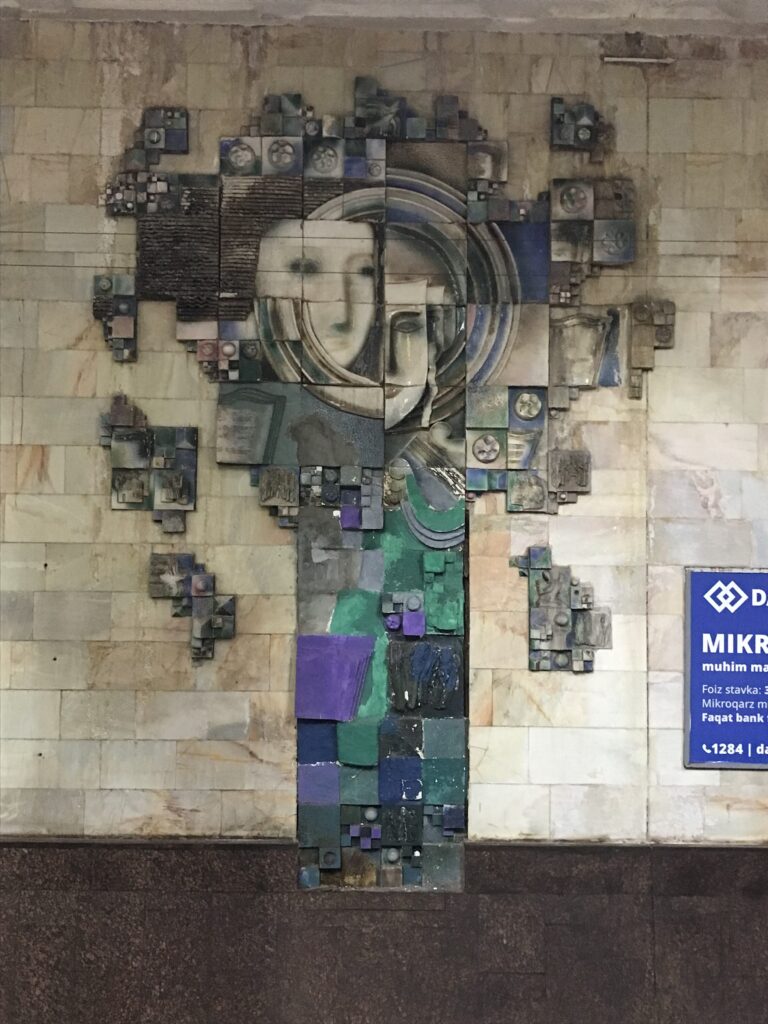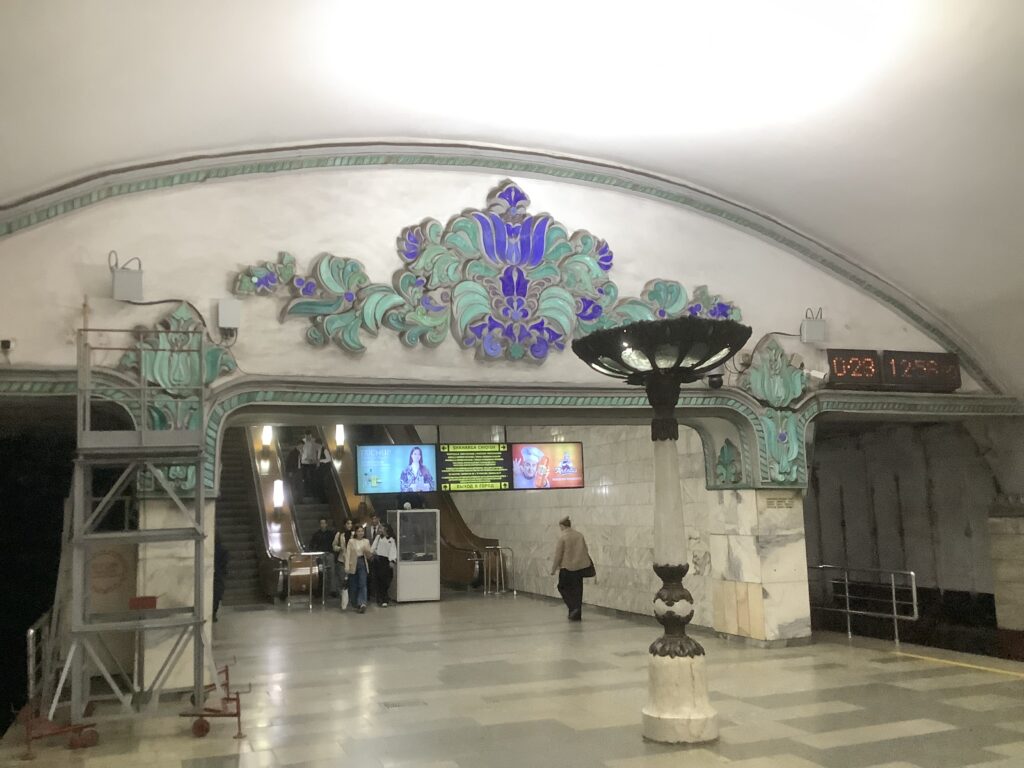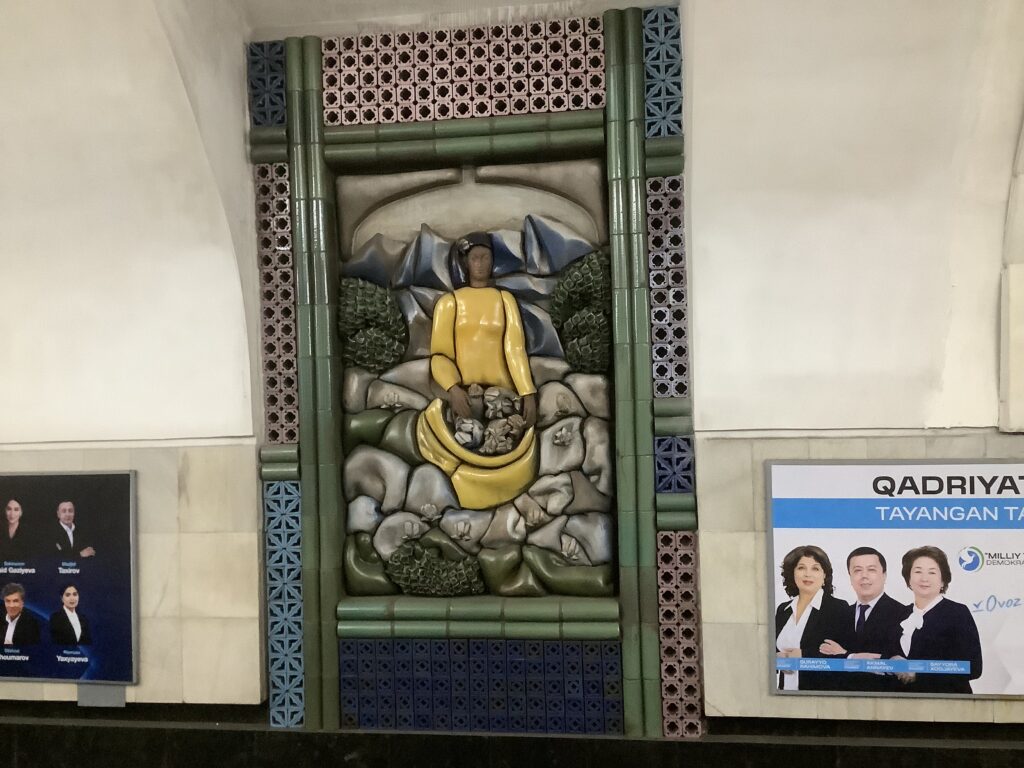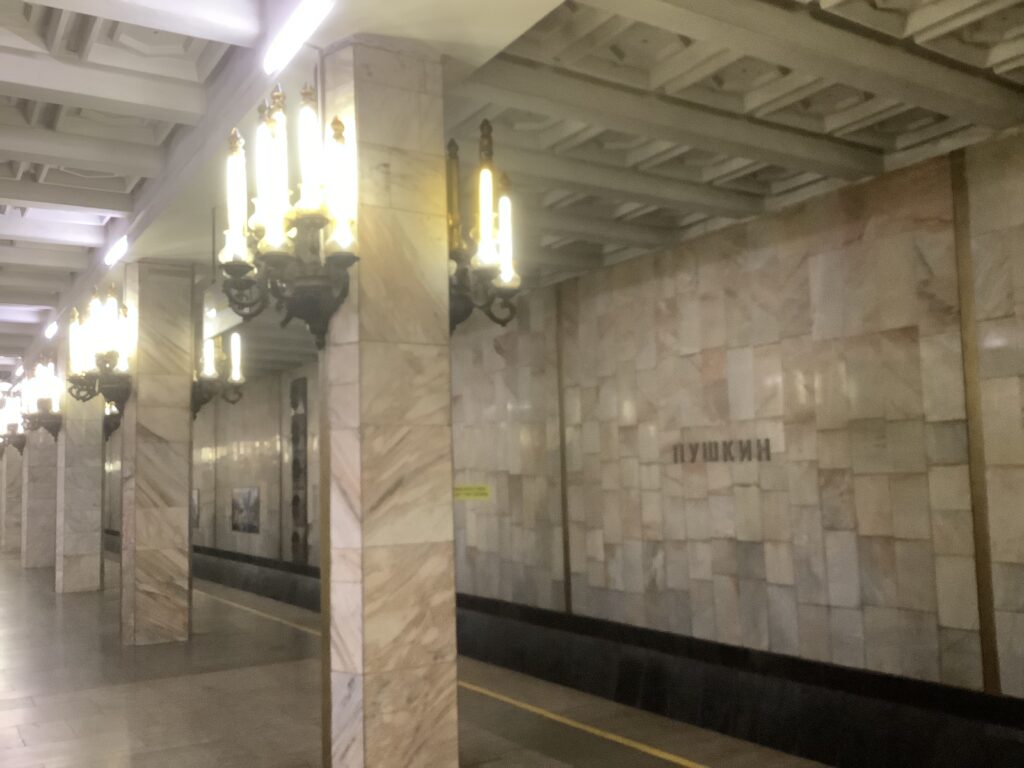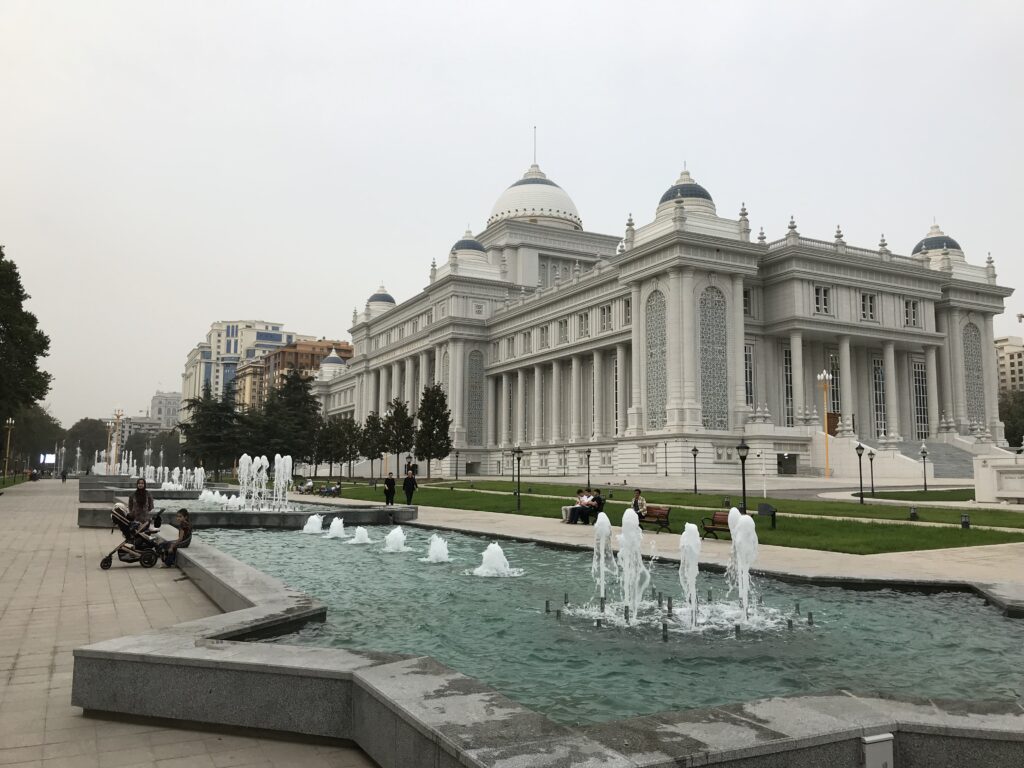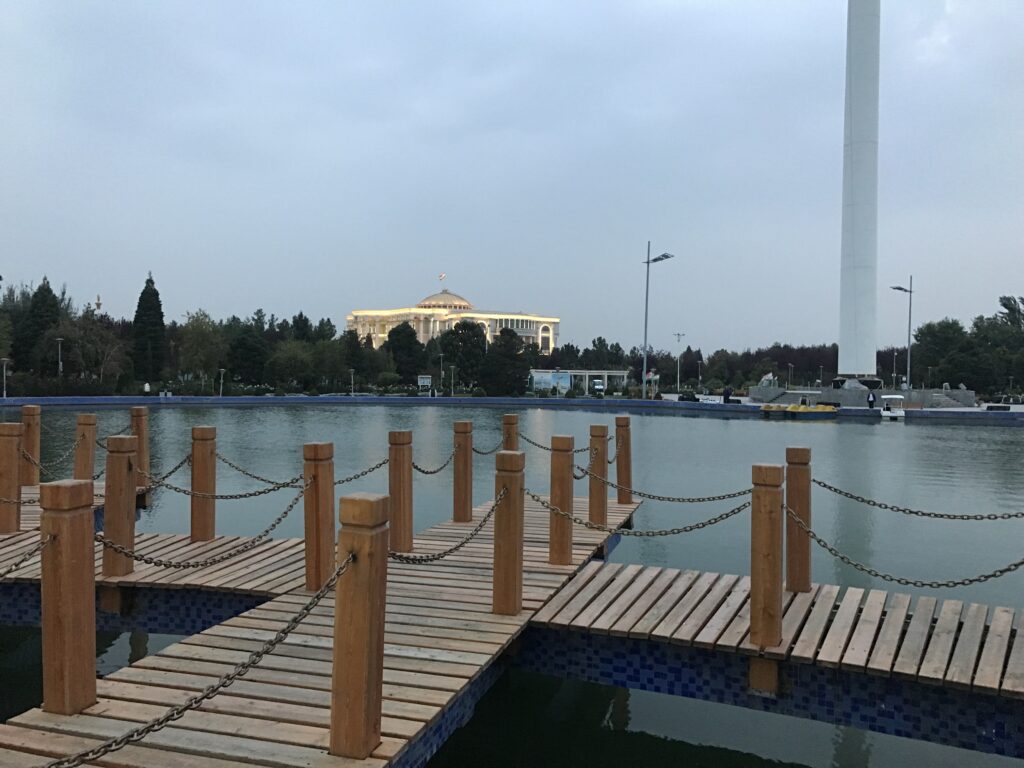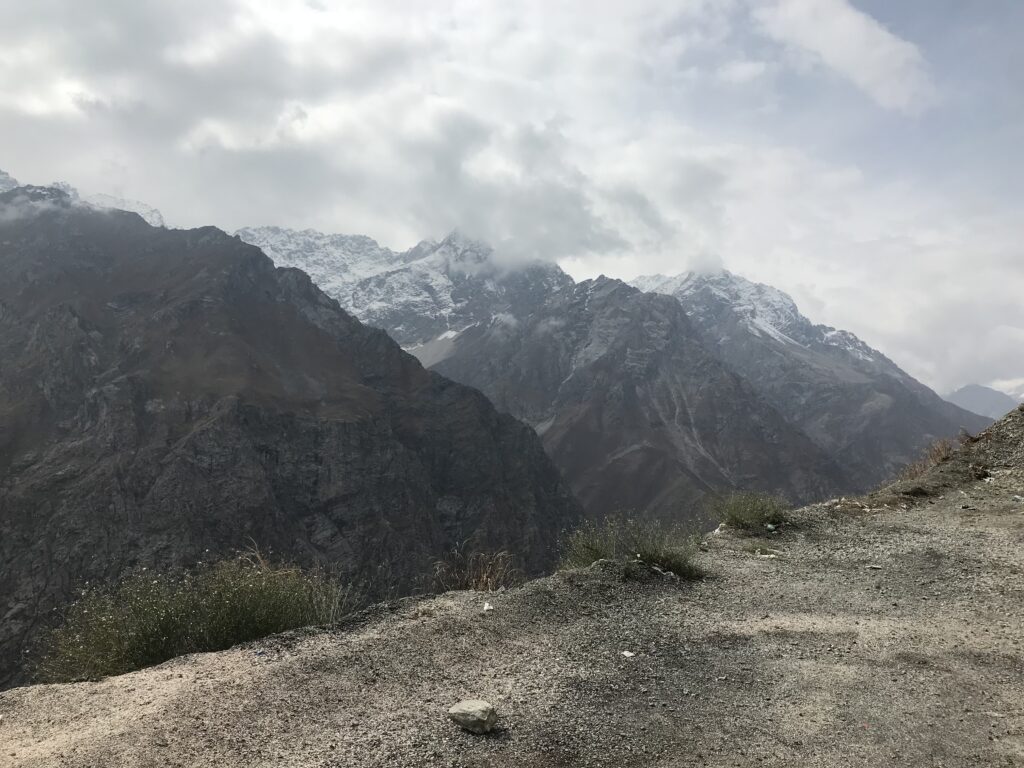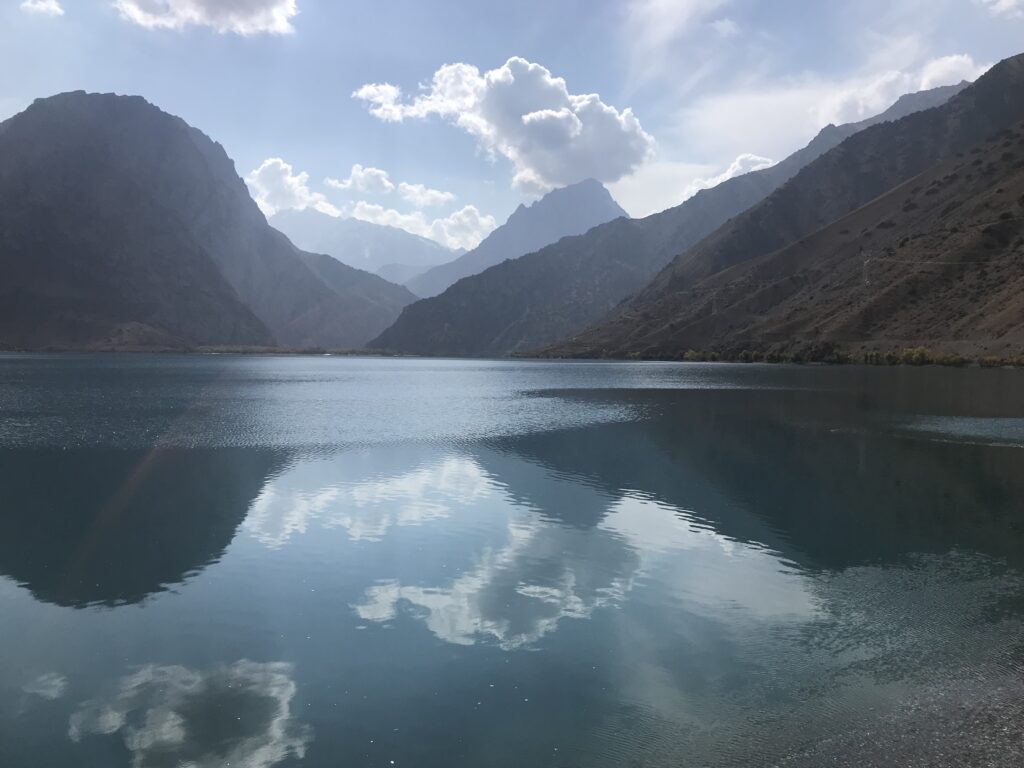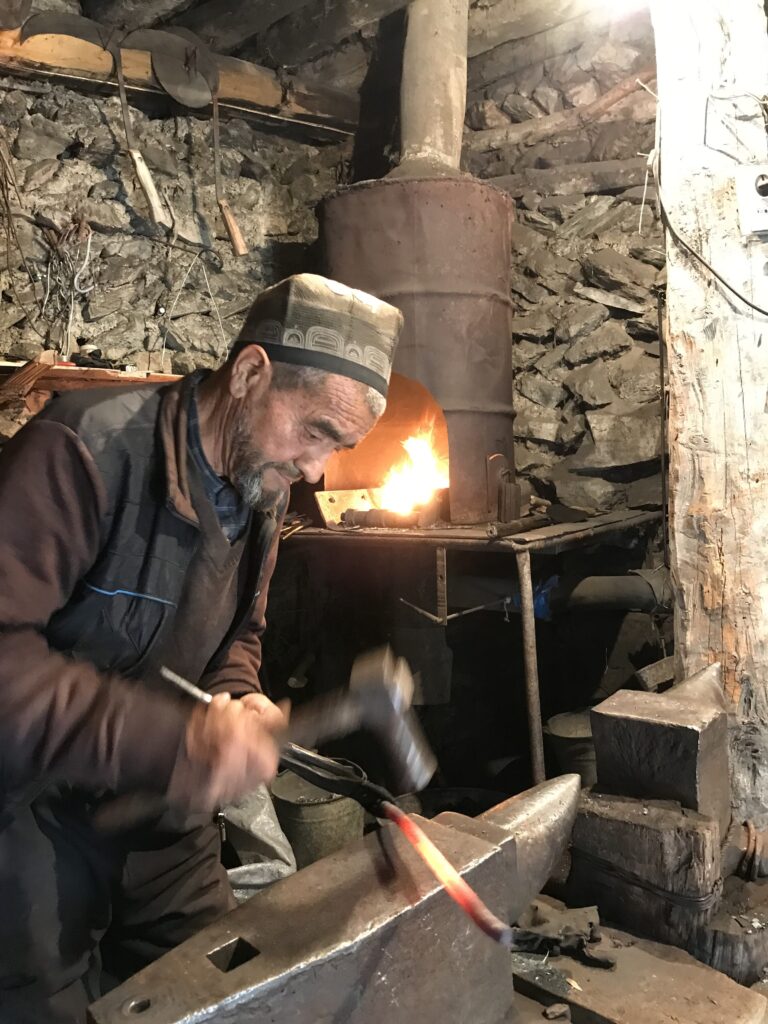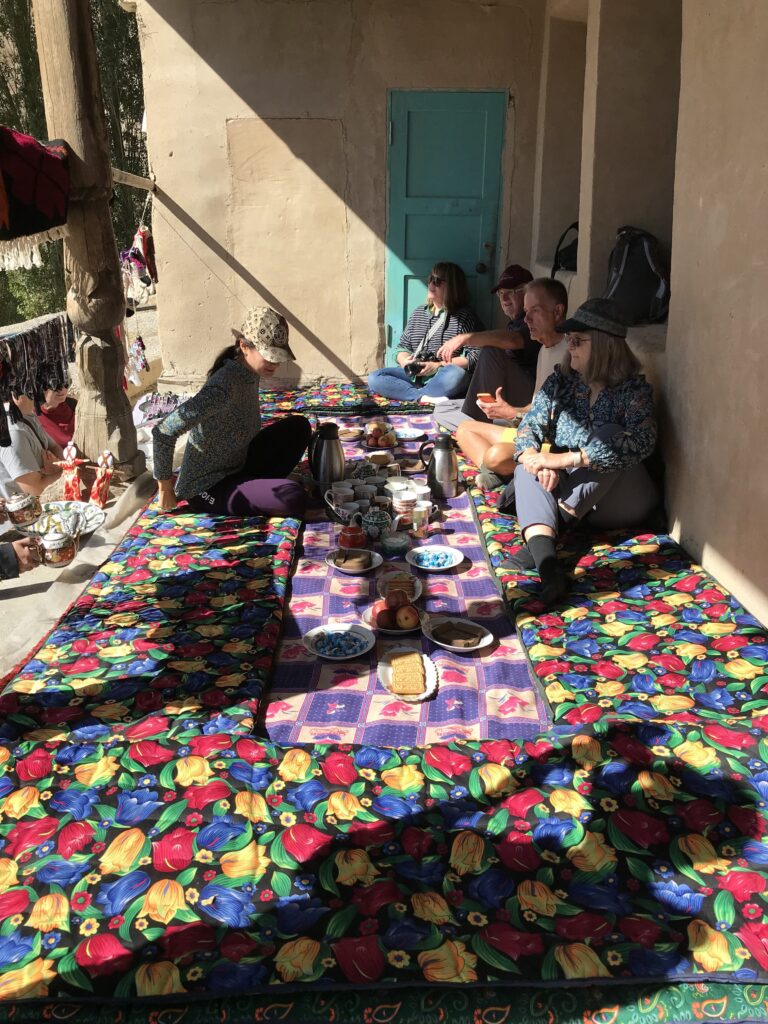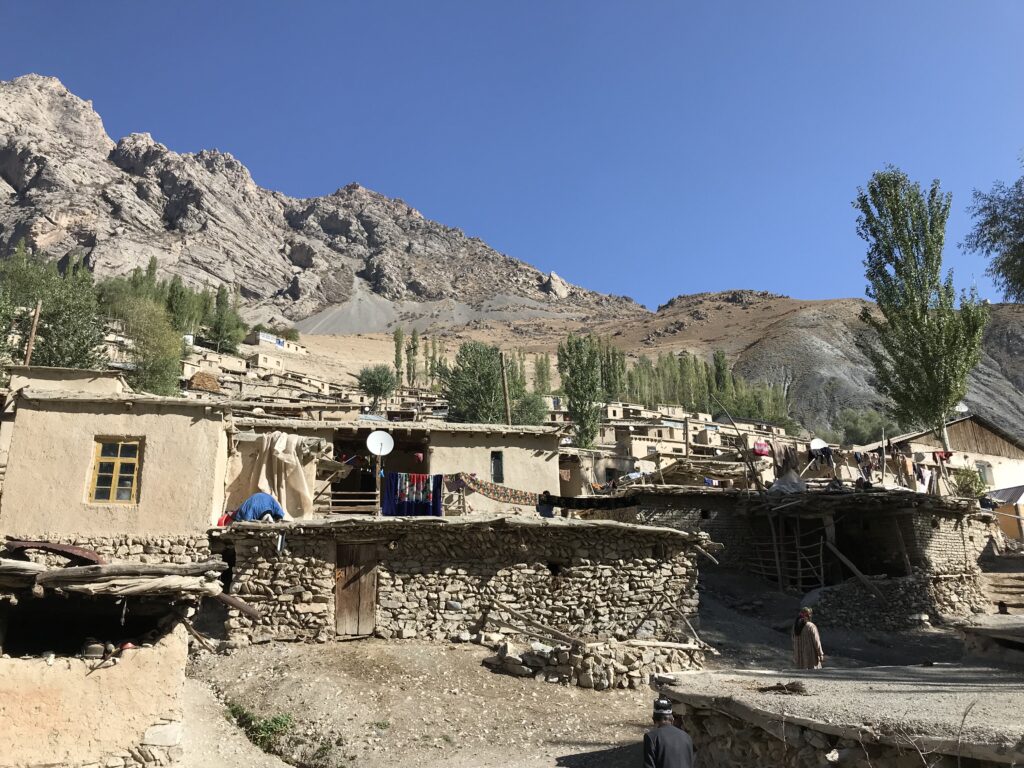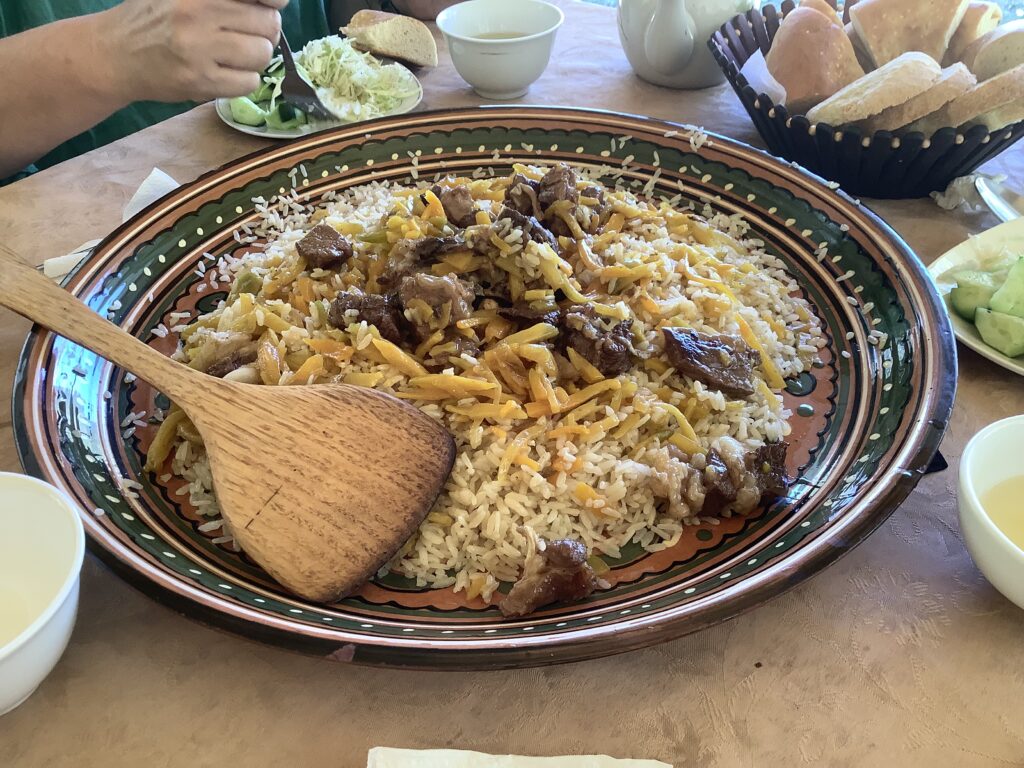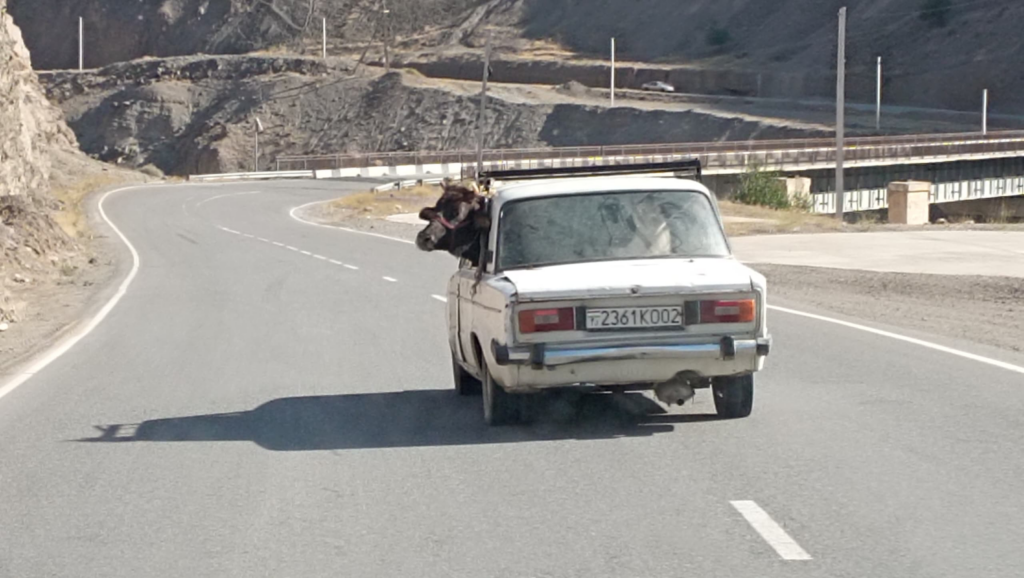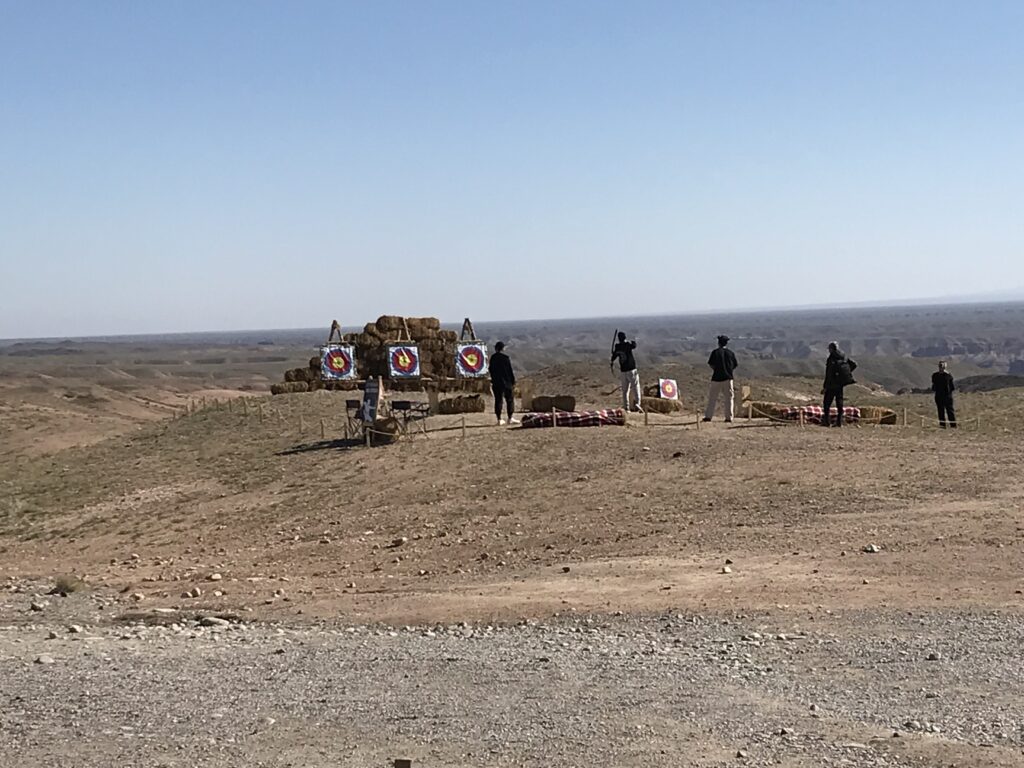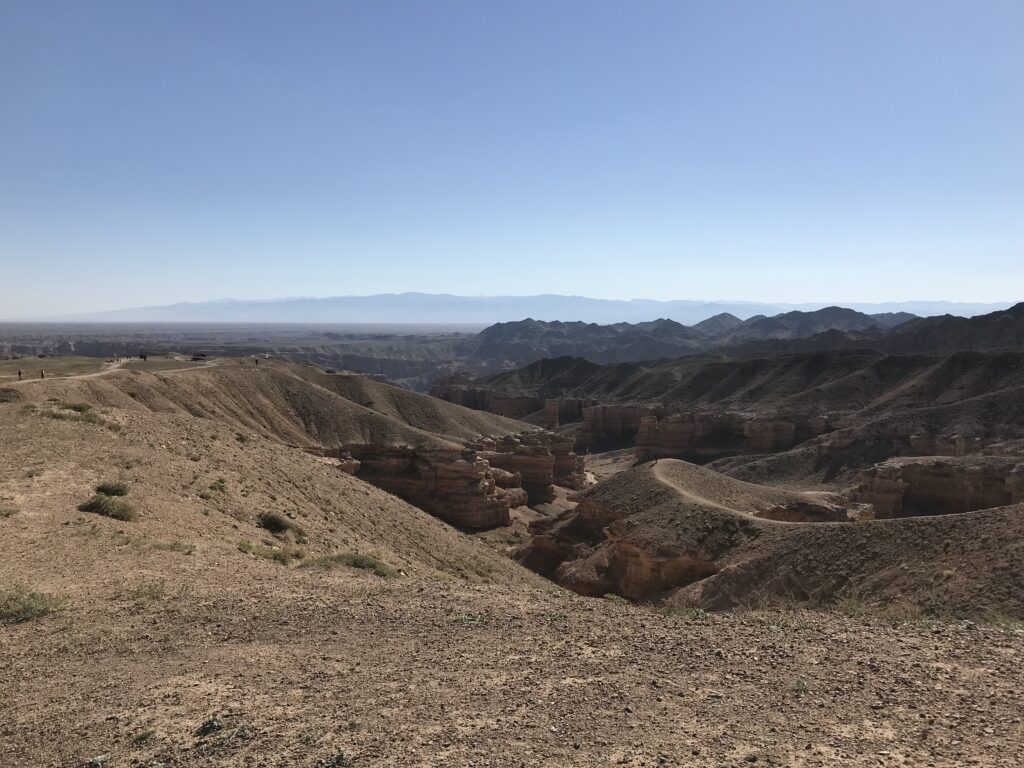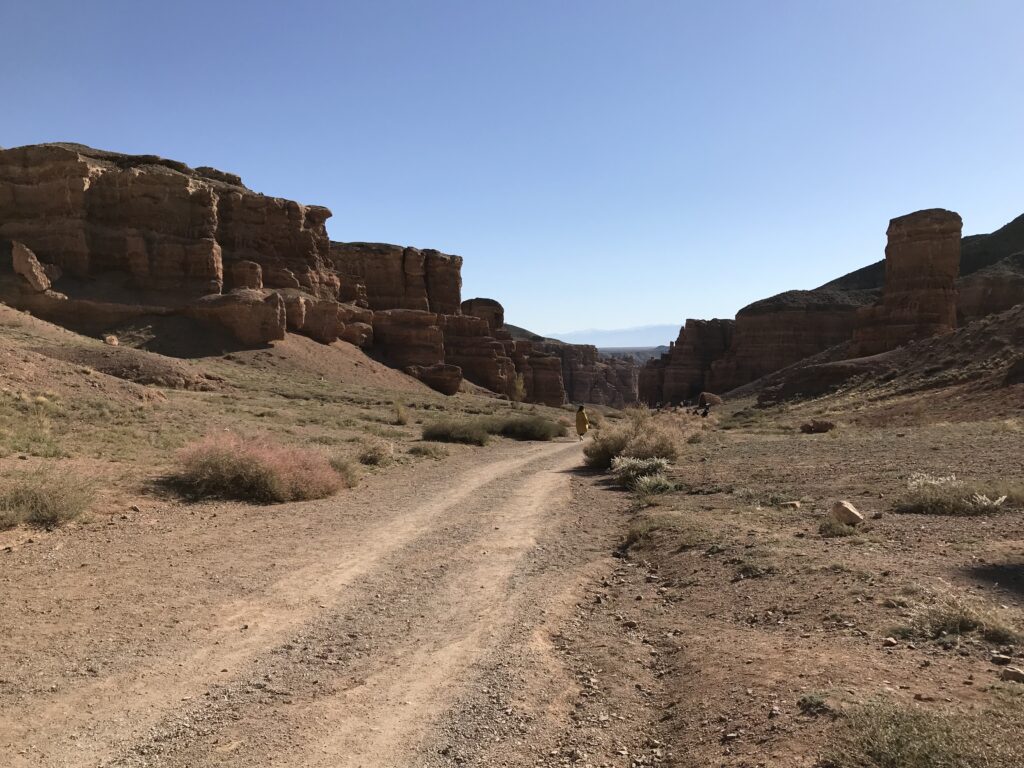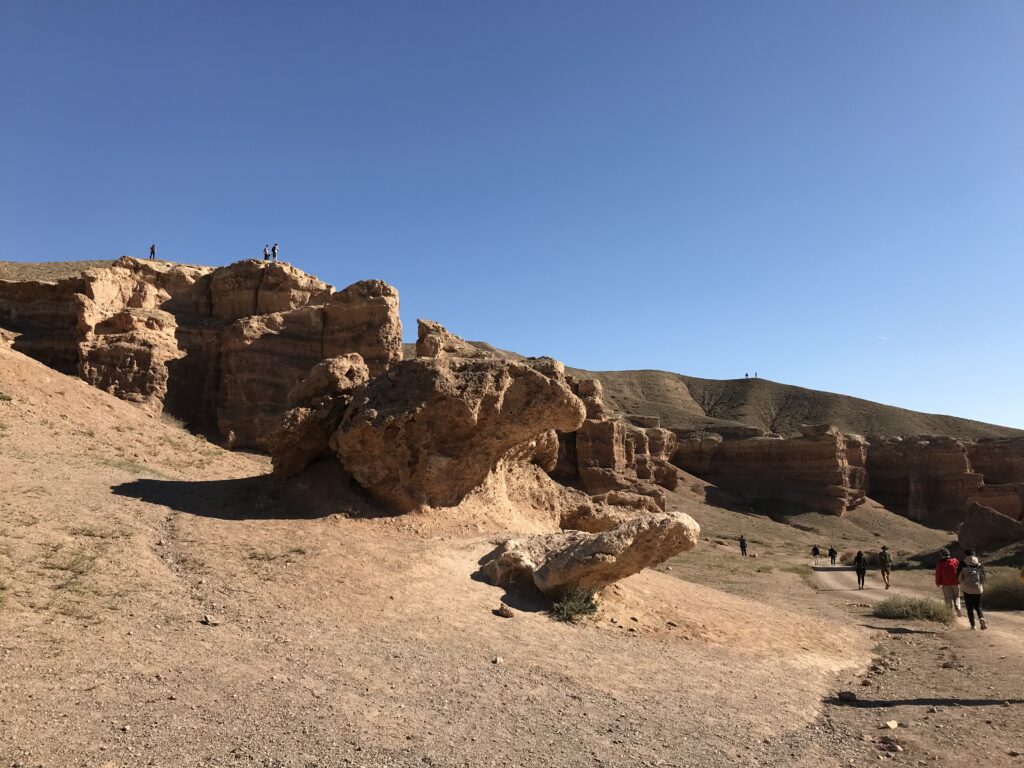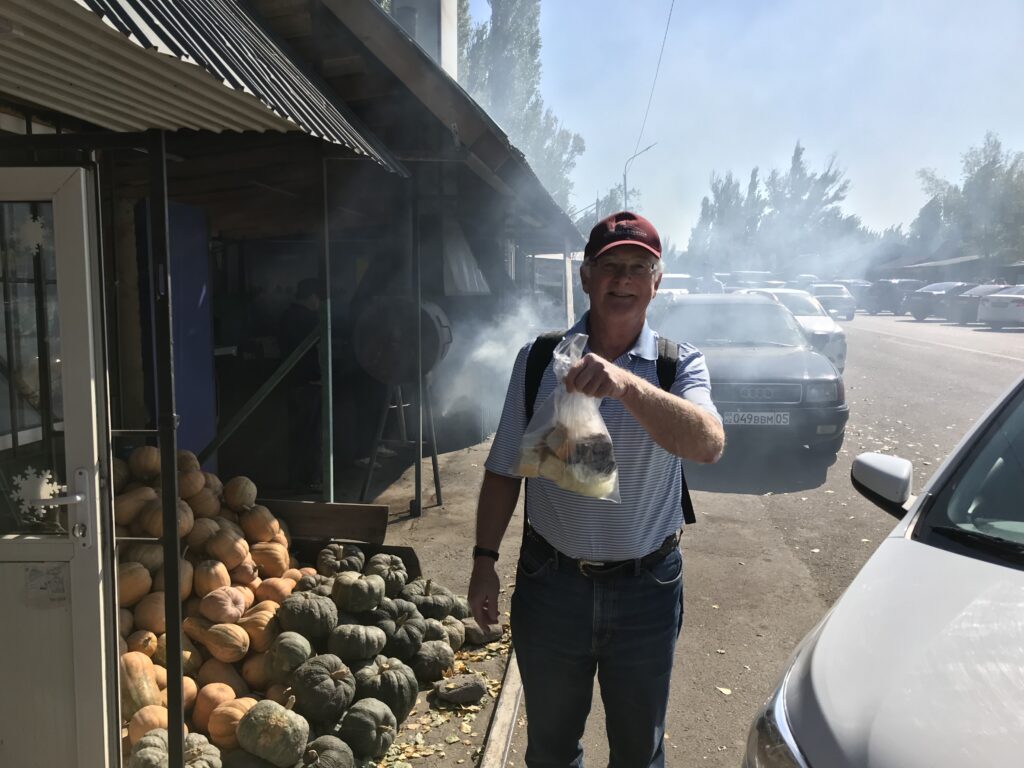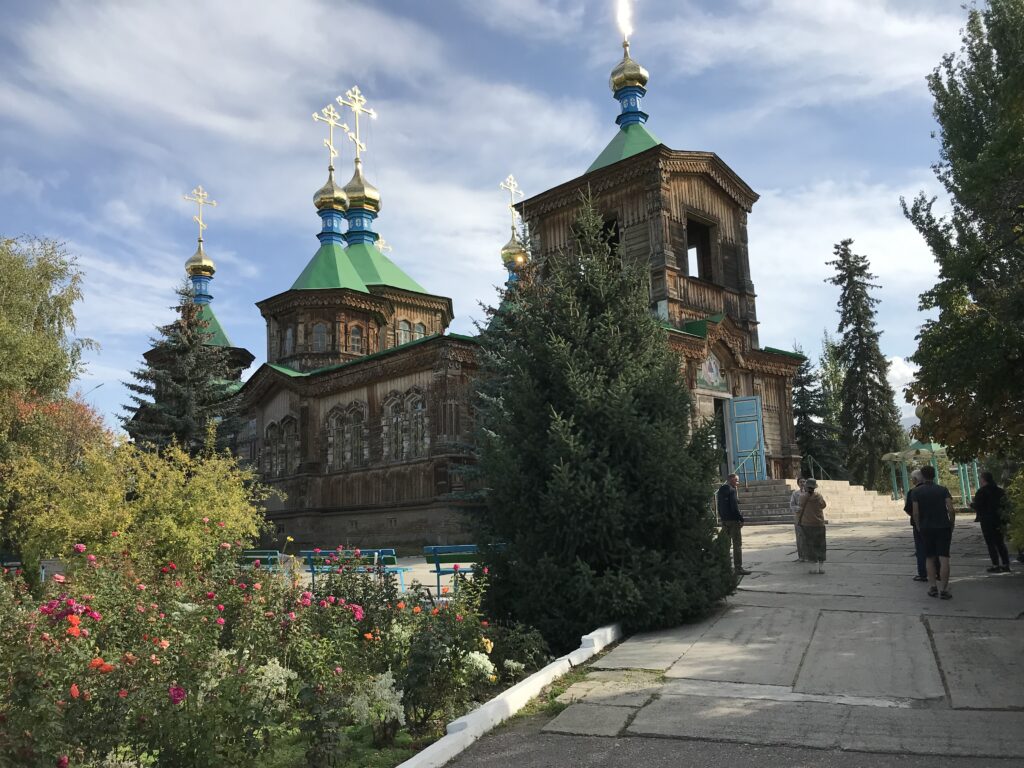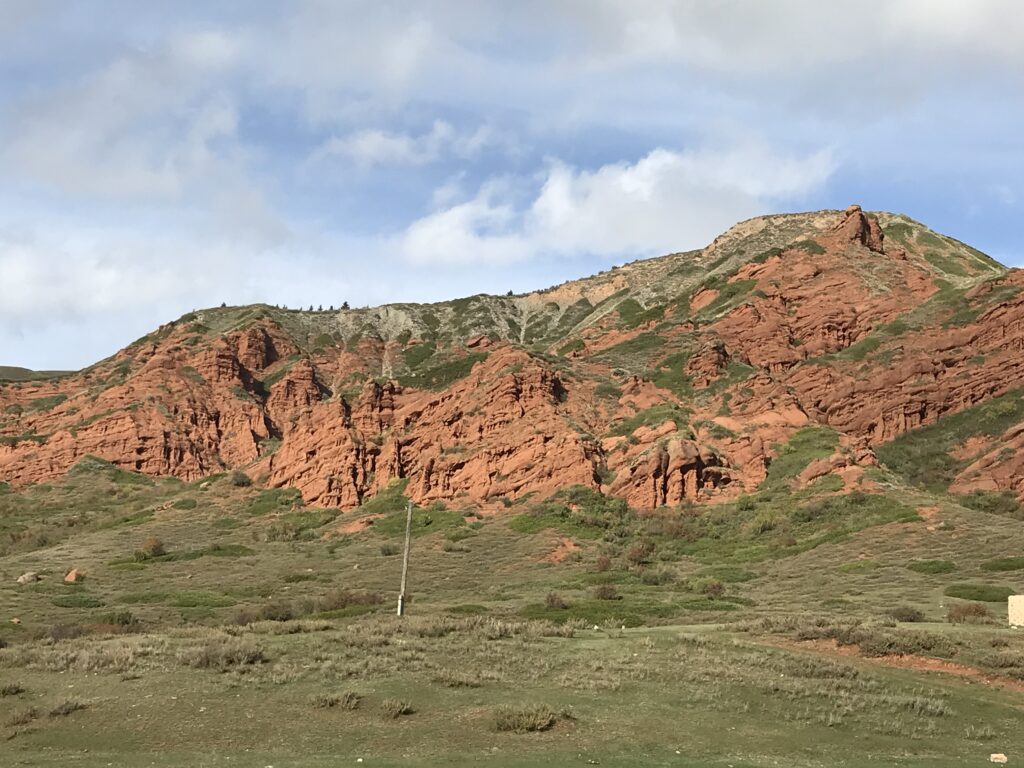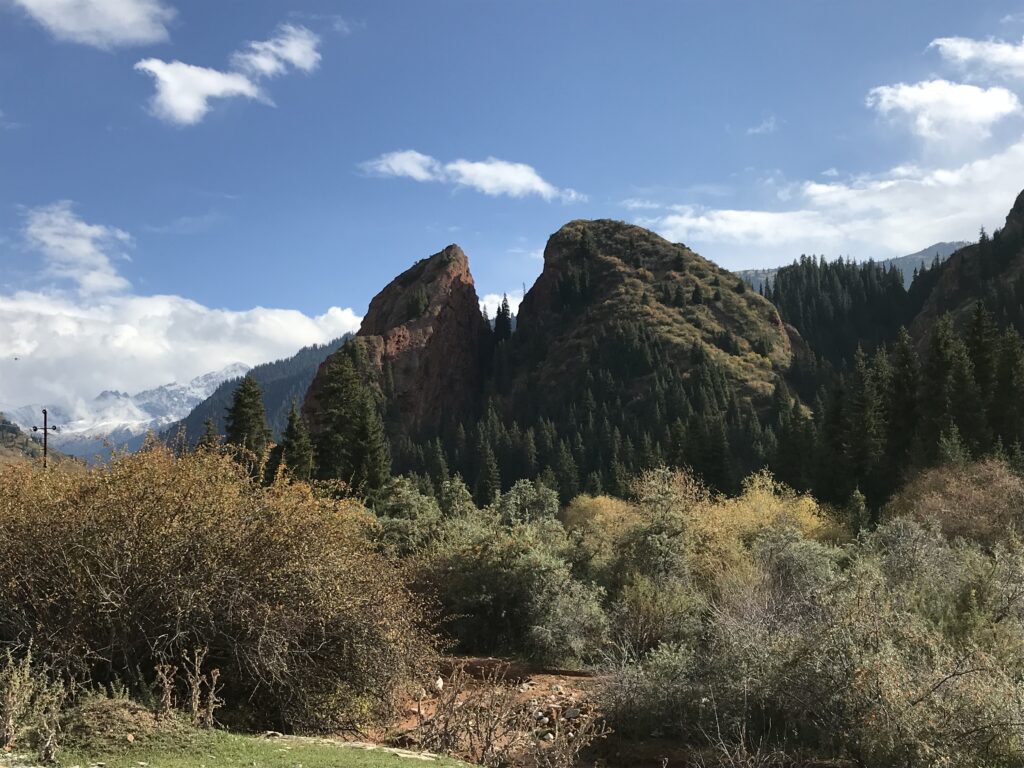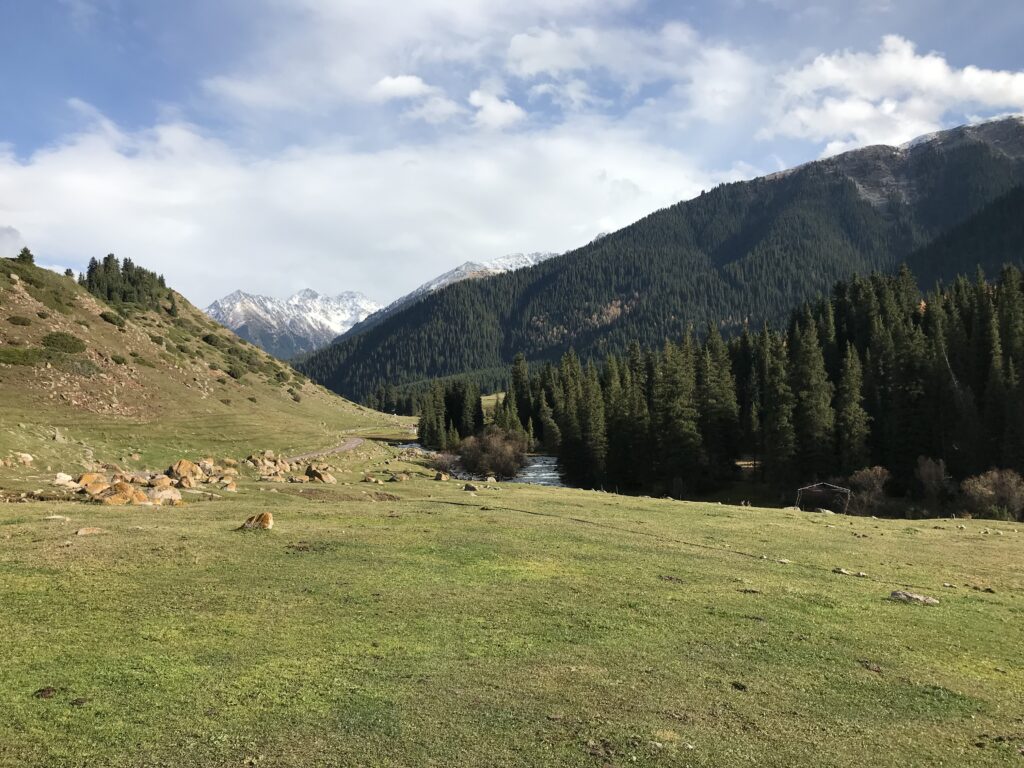We crossed from Uzbekistan to Turkmenistan a couple of days ago, and the fifth and final Stan is different again from the others. Each has its own vibe — different languages, social norms, customs, and food. We have wound up in Ashgabat, the capital, and from here fly home via Istanbul, ending our Central Asian adventure.
It took 2 1/2 hours to cross the land border, as Turkmenistan requires form-filling, fee-paying, Covid testing, picture-taking, luggage scanning, passport checking, visa-issuing, and general lining-up. A blast from the past!
First stop, Konye-Urgench, a UNESCO World Heritage site dating to 500-400 BC. Several tall structures have undergone restoration and preservation work, but the 25-hectare site contains an entire buried city. The government wants to excavate, but in Soviet times the site was made into a cemetery, and grave cairns and headstones dot the landscape. Muslim religious rules forbid moving graves, and archaeological excavations can’t happen in a modern graveyard. So it’s a stalemate for now —

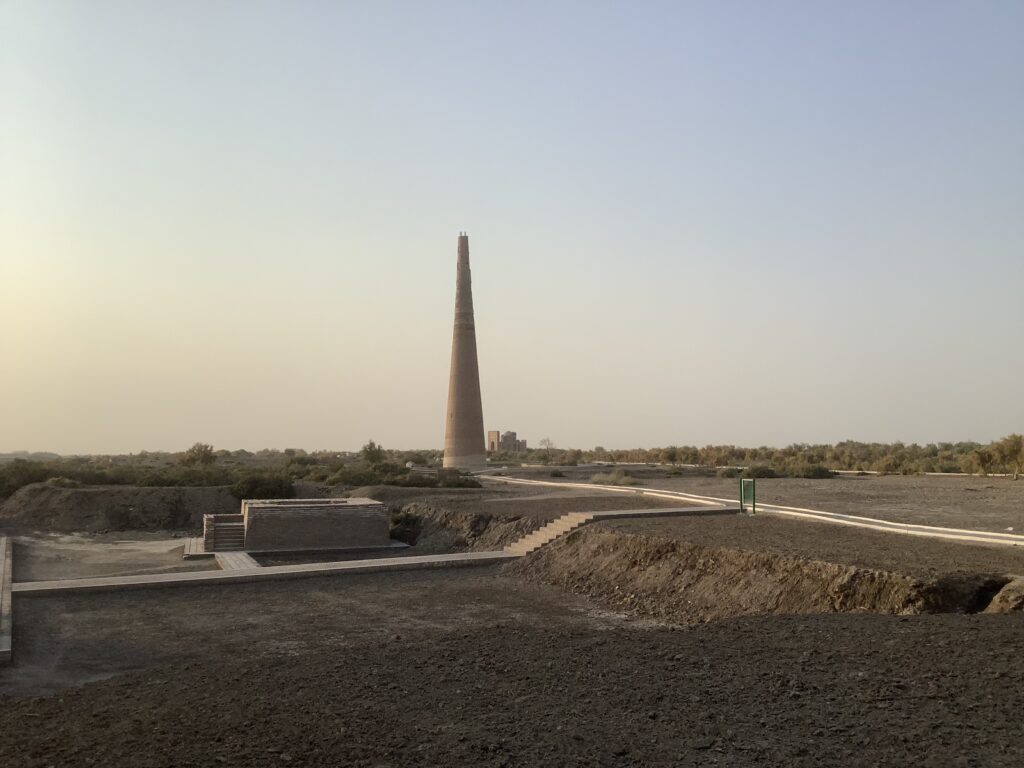
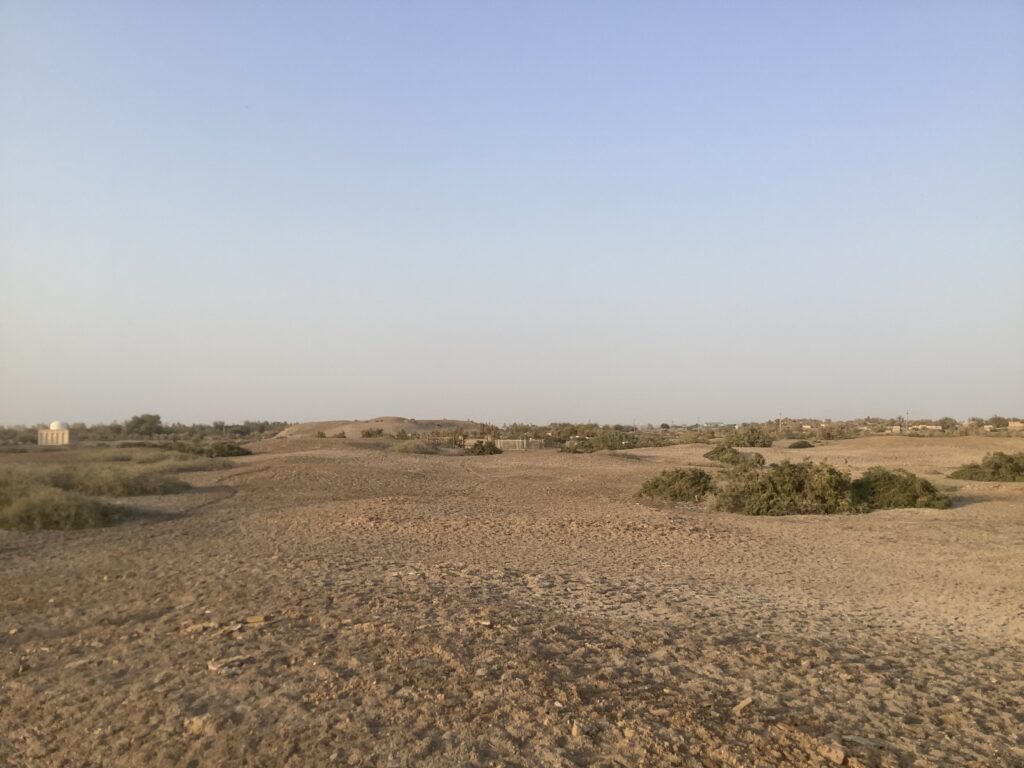
Ashgabat is unusual. The country is wealthy from gas and oil, and its capital has broad avenues of huge and imposing white buildings, massive fountains and monuments, vast plazas, and acres of groomed parks. But you rarely see any people anywhere, except in indoor shopping malls. Our local guide — who has to be politically correct, as it’s a somewhat repressive society — said it’s because the distances are so big in the city that people drive not walk, but we Googled and apparently it’s an unwritten but well-understood convention that the government does not want random groups of people messing up the streetscapes. On a related note, only white and silver cars are allowed in Ashgabat, again to achieve the look they want. And in keeping with this theme, no smoking is allowed outdoors in public places. So the hotels, stores, and restaurants all smell smoky. So strange to us!
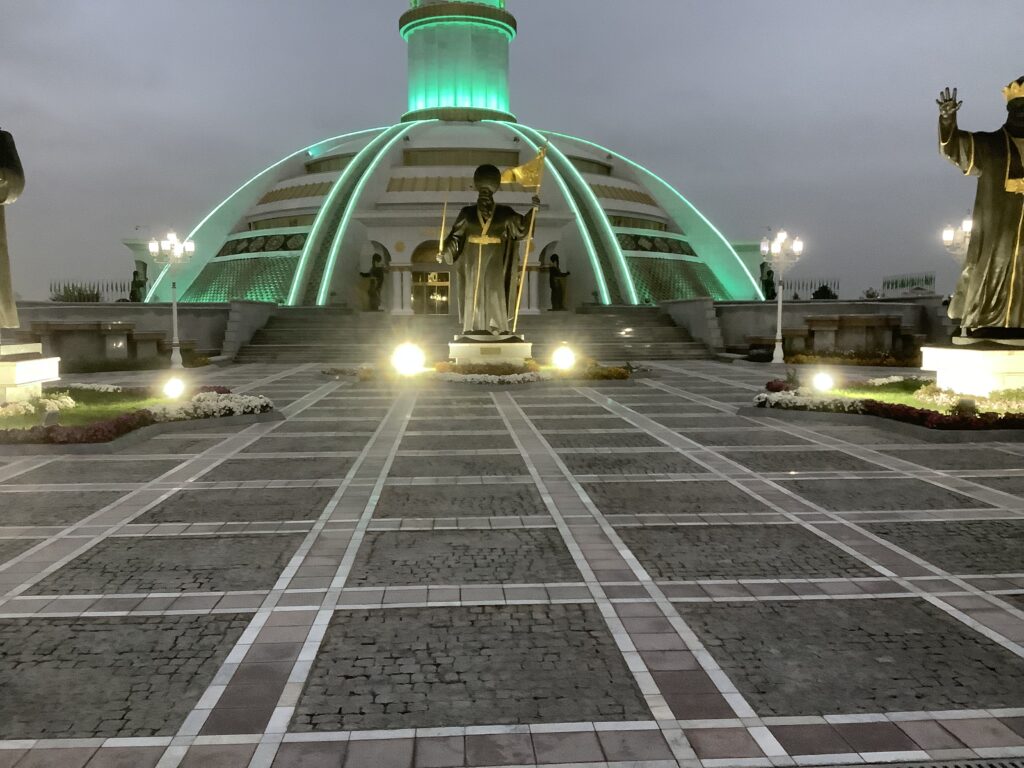
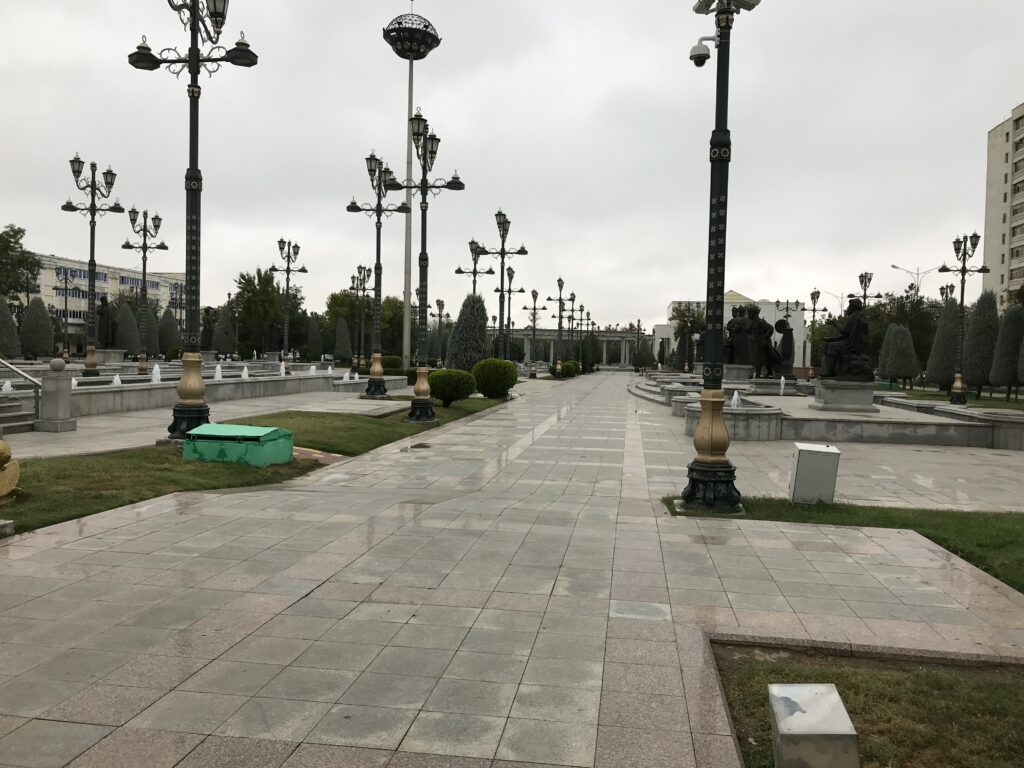
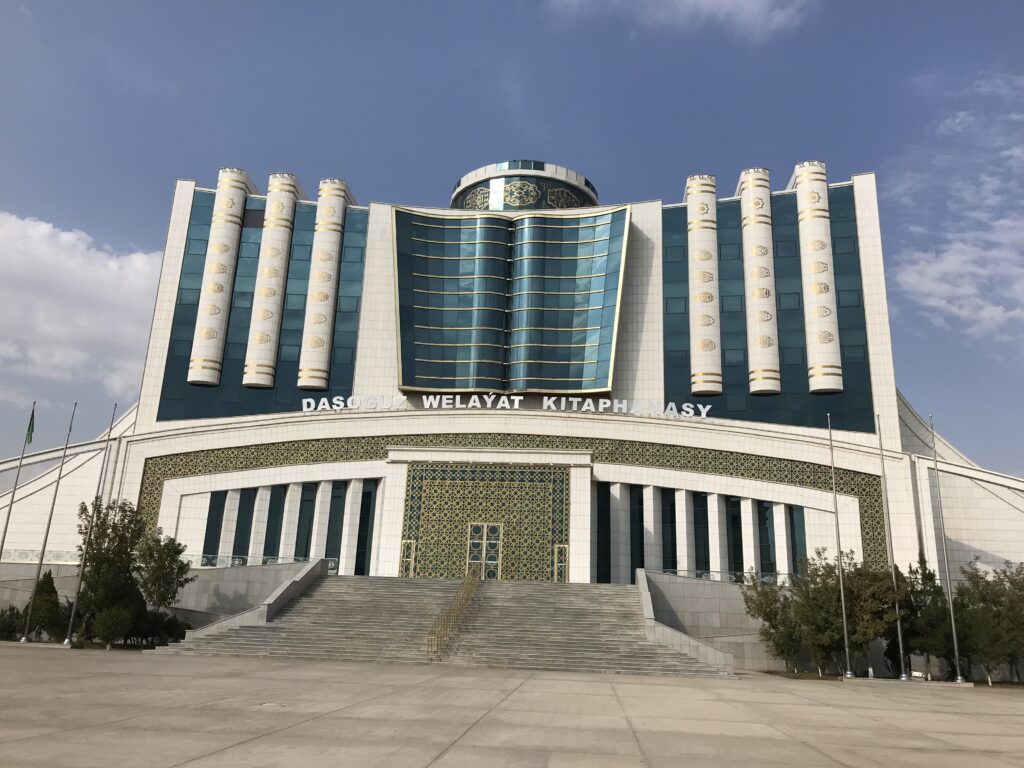
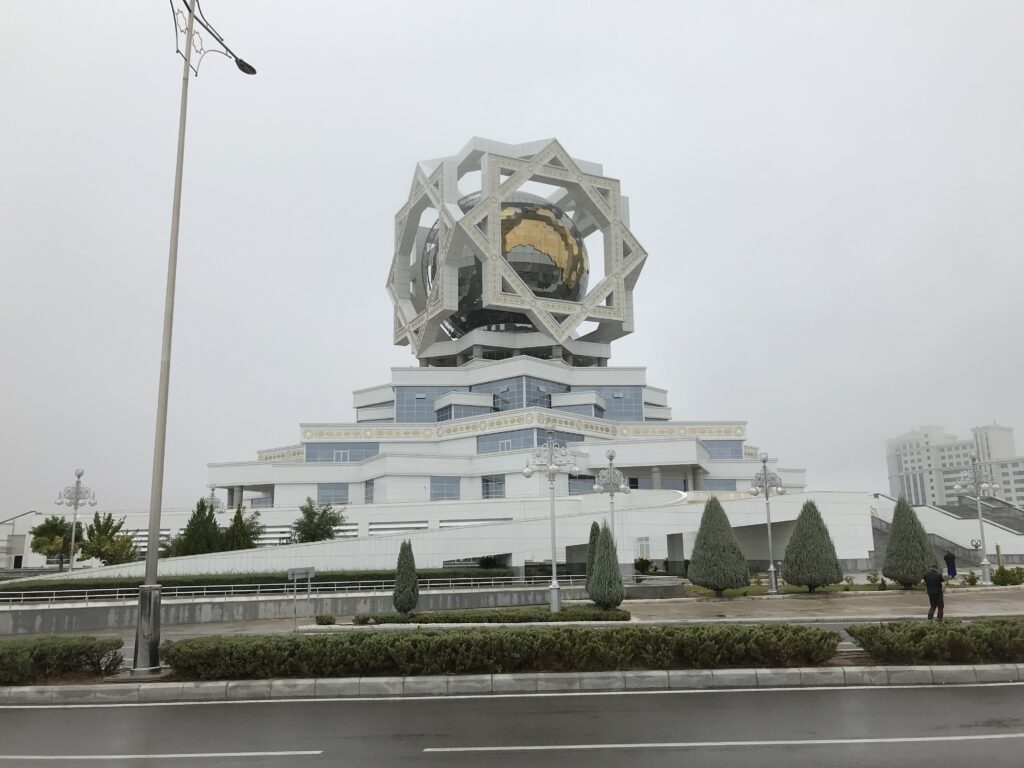
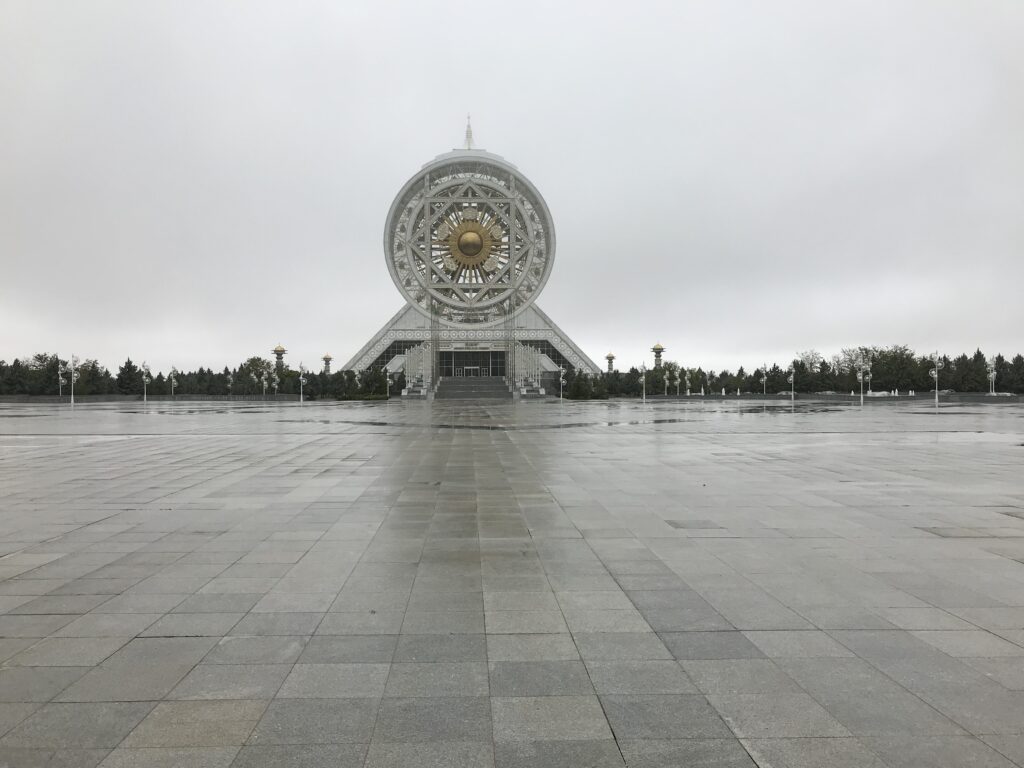
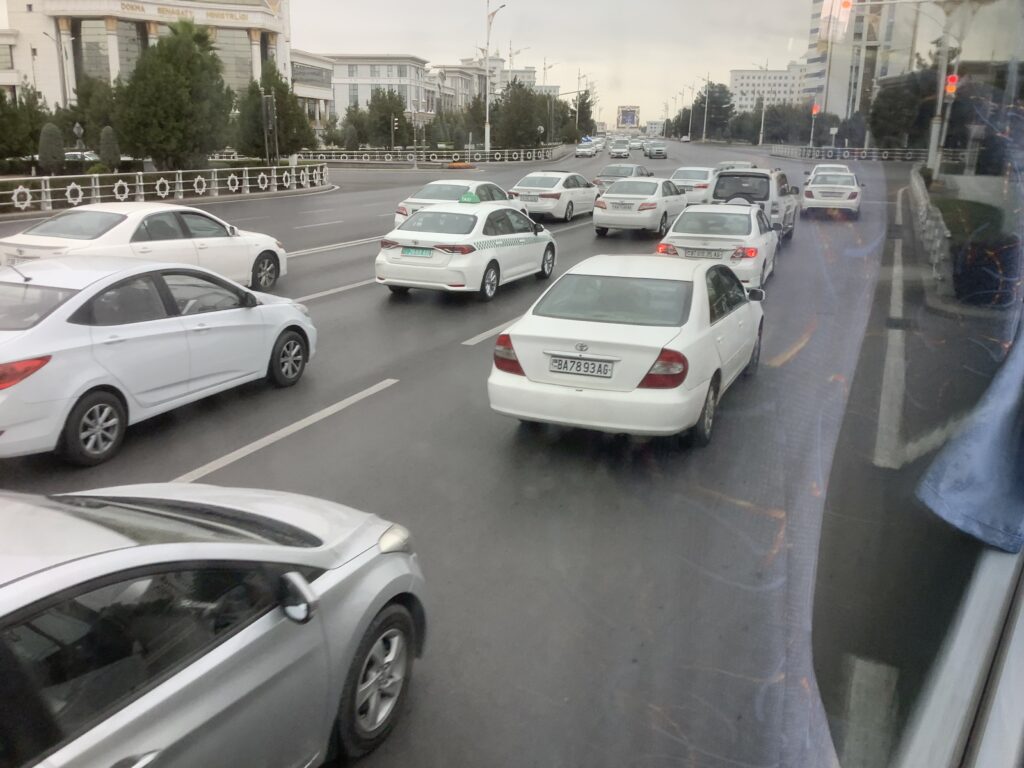
The buildings are very much “design themes”. You saw the book-front library above. And the airport is very beautiful, it’s in the shape of a giant bird. And here is a bank, check out the gold-coin roof topper.
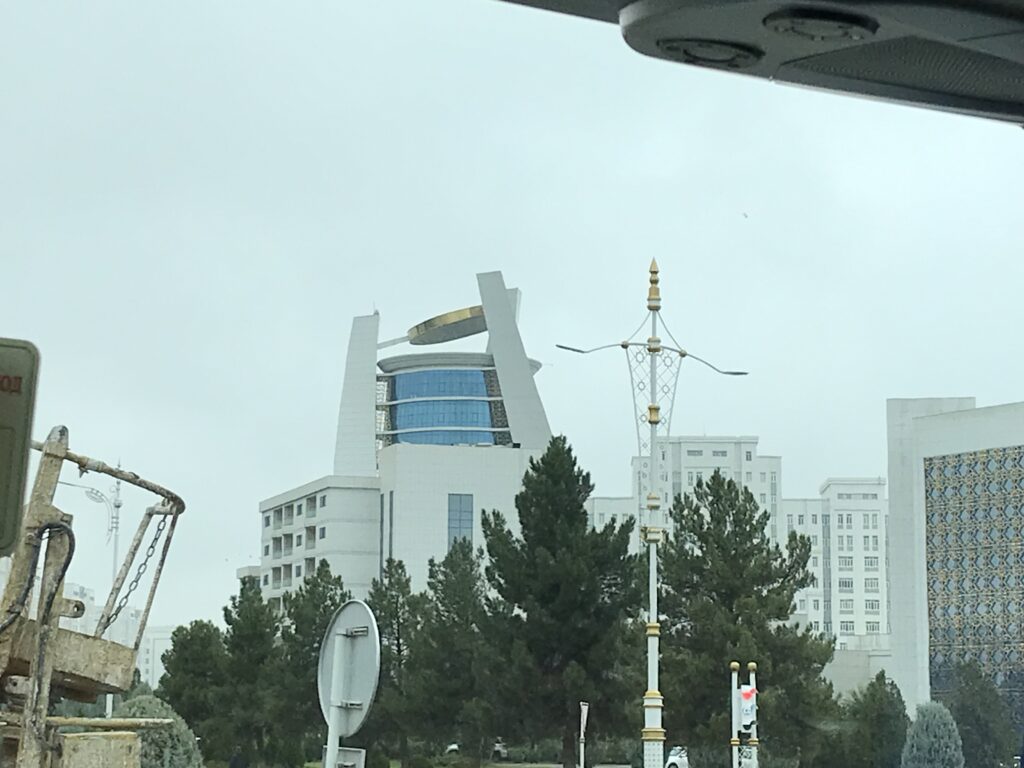
But my stories are out of order– let’s jump back to the destination right before Ashgabat: The Gates of Hell. Quite a drive to get there, 5+ hours on a mixture of rough road and desert tracks, and btw another camping experience (I’ve had enough yurting to last me for a while), but it was worth it to see the site. It’s in the Karakum Desert, an area of natural-gas reserves. The main crater was formed when a drilling site collapsed in 1971, and gas began to leak out. The leak didn’t stop so they set it on fire; that’s apparently the standard industry process, and the engineers calculated it would burn out in 3 weeks. But it is still aflame 53 years later. I will post a picture of the main fire crater, plus a daytime view of a secondary crater filled with water, you can see the bubbles indicating gas is still coming out of that one too. And in an amazing feat of blog technology 😂 , I believe I have managed to insert a short video to show the size of the burning crater. 🤞🏻
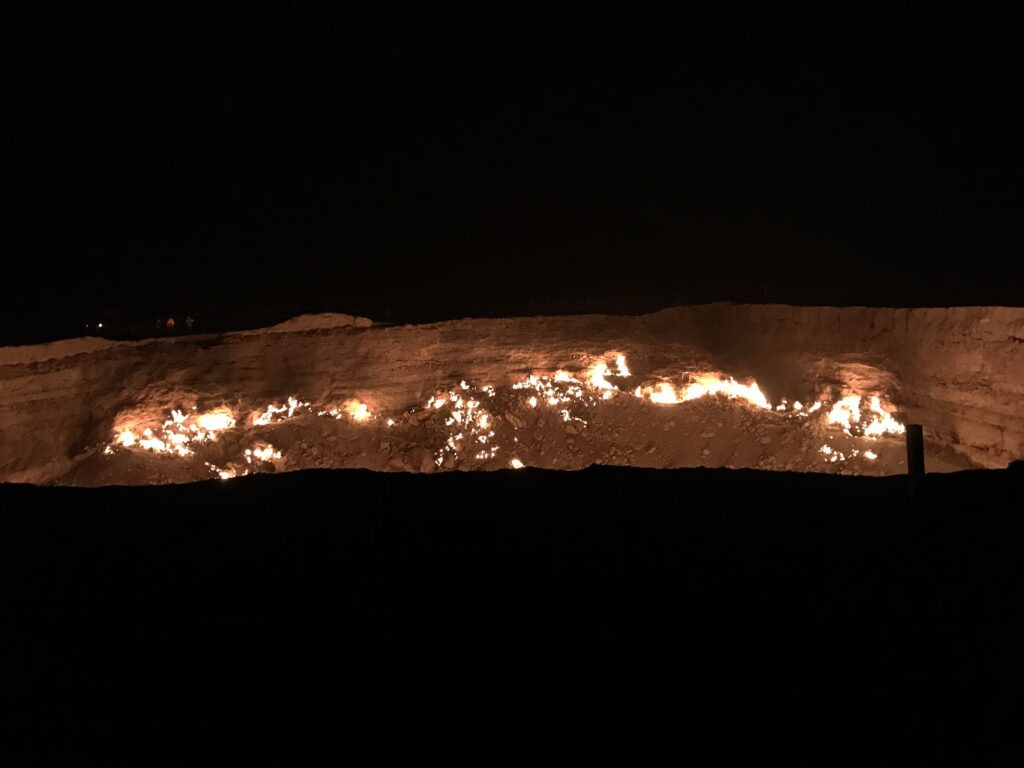
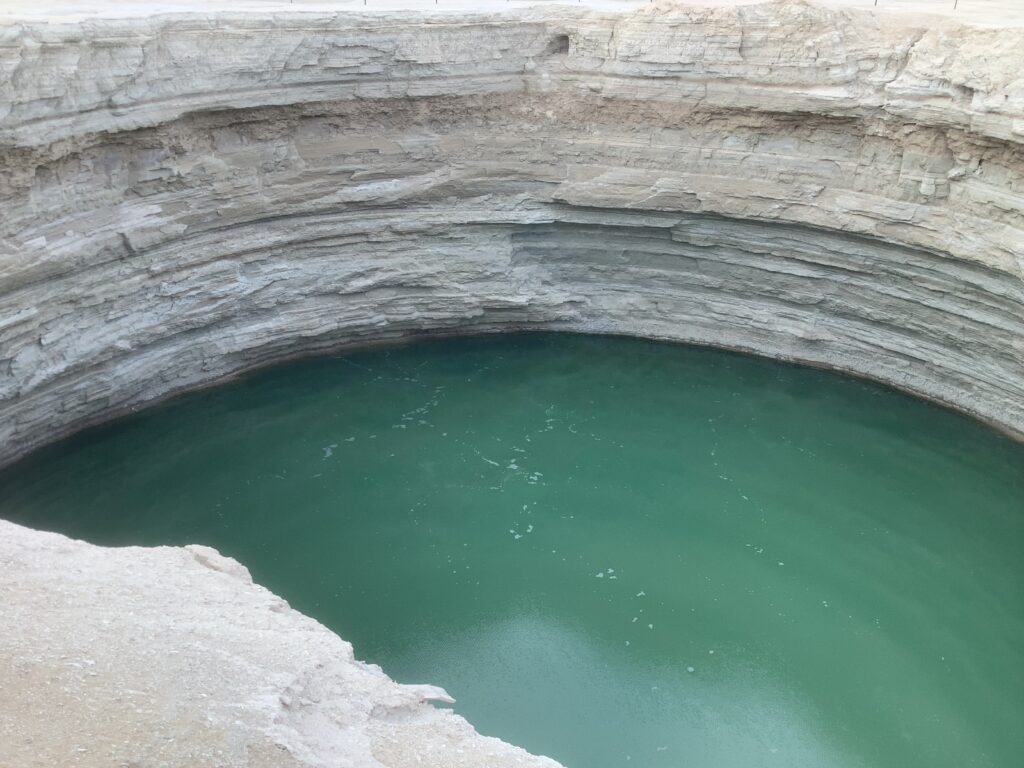
On our sand track travels, by the way, we saw warning signs similar to “deer crossing” in Canada, but these ones are for camels, which wander everywhere there.
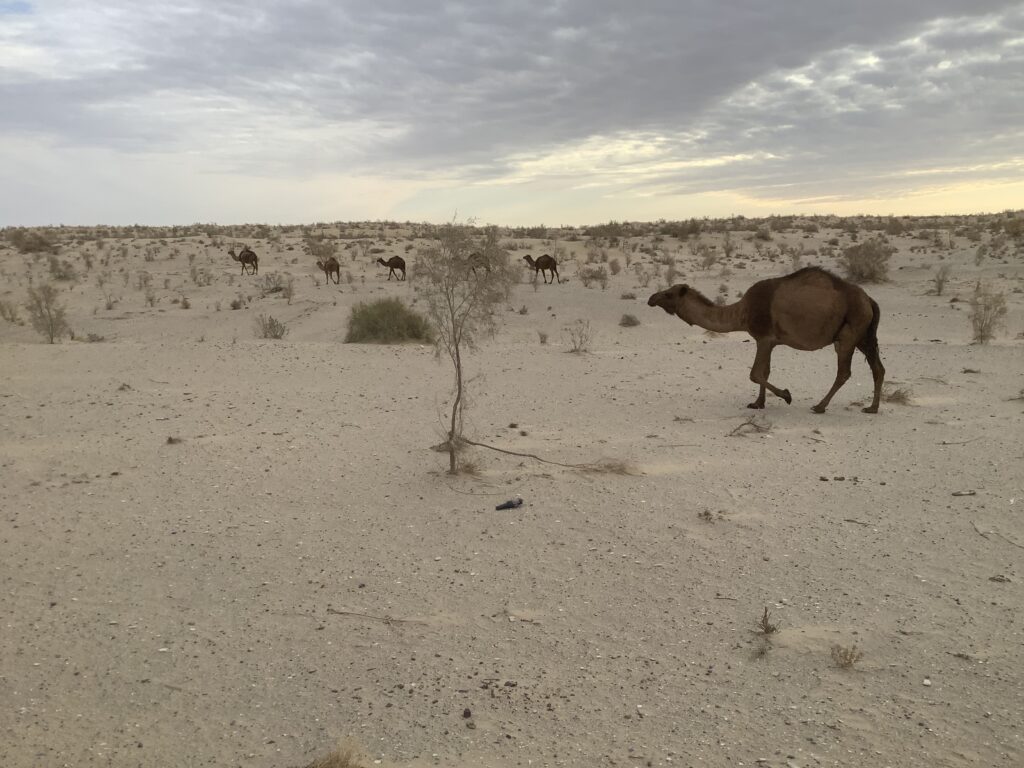
And to end the blog, why not a fashion shoot? All the Stans have elaborate men’s winter headgear, although the shapes, sizes, and thickness of the wool pile vary from place to place. These are the Khiva version, aren’t they cool…?
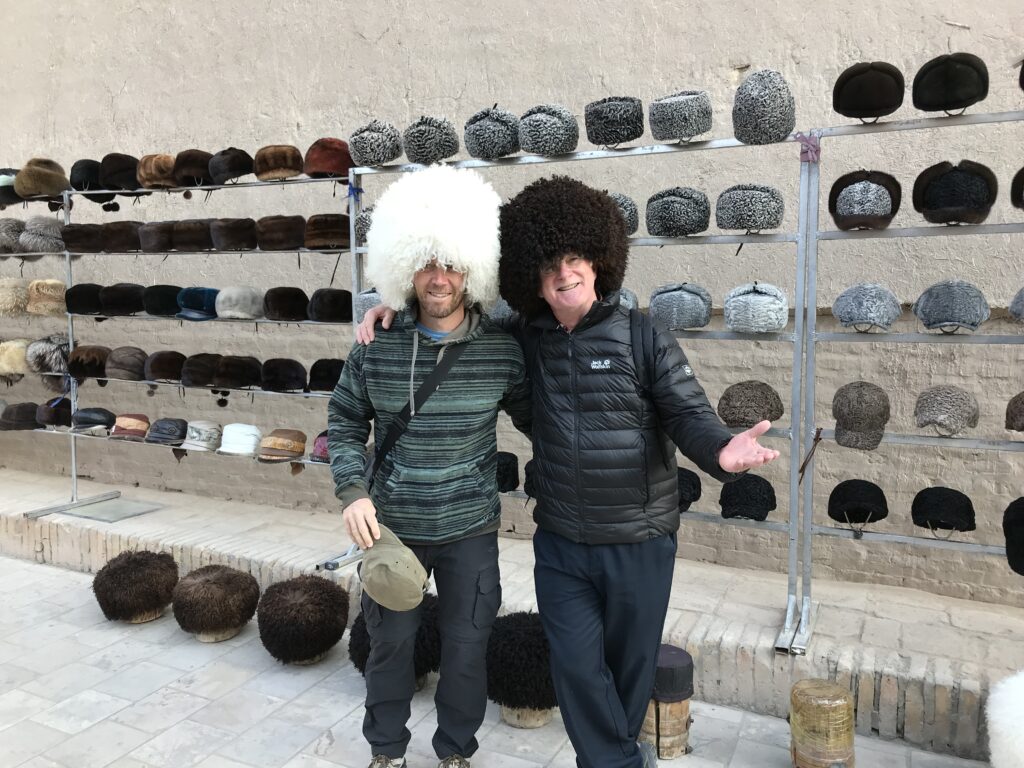
Thanks for following along! We have had a great time, although, as always, it’s really nice to be soon heading home… ✈️
